You don’t need a big budget or endless imagination and creativity to set up an engaging and playful indoor learning space – just some out of the box thinking, a little inspiration, regular reflection and most importantly, ongoing conversations with the children so you can hear their thoughts, suggestions and opinions and in the process encourage ownership and pride in their space!
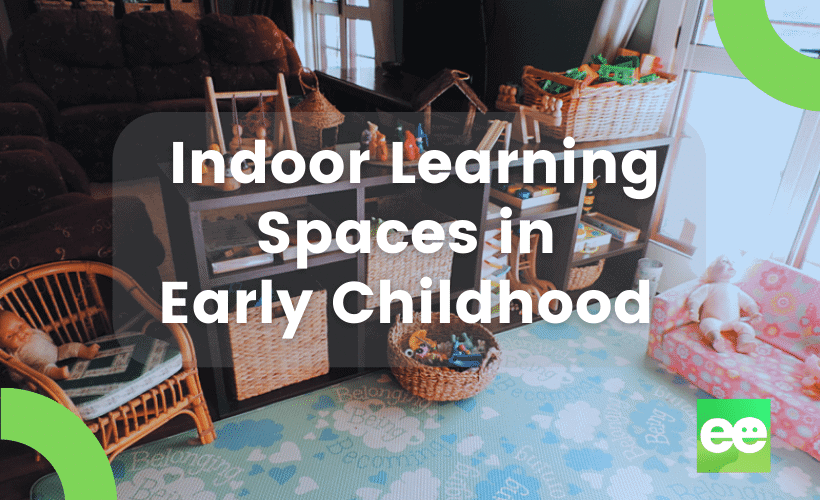
Why are indoor learning spaces and environments important in early childhood?
They can influence learning.
Interests, developmental stages, confidence, trust.
They can influence a sense of belonging.
Does it feel/look/smell safe, inviting, familiar?
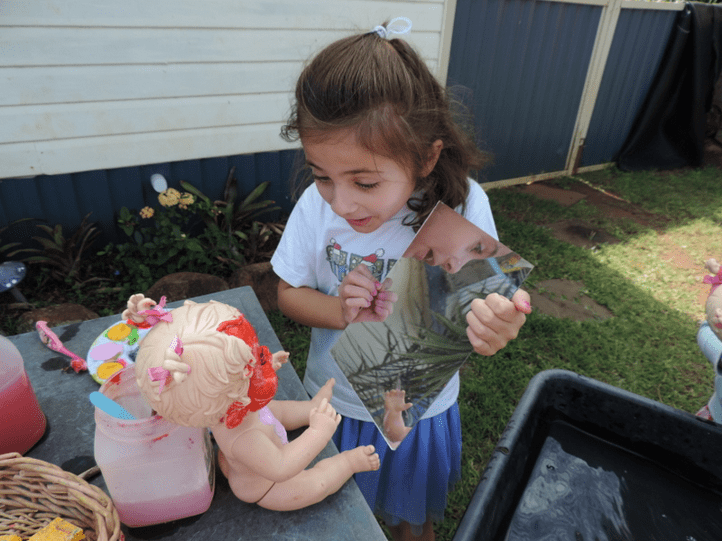
They can influence behaviour.
Are there opportunities to challenge self, be alone, move freely, make own choices?
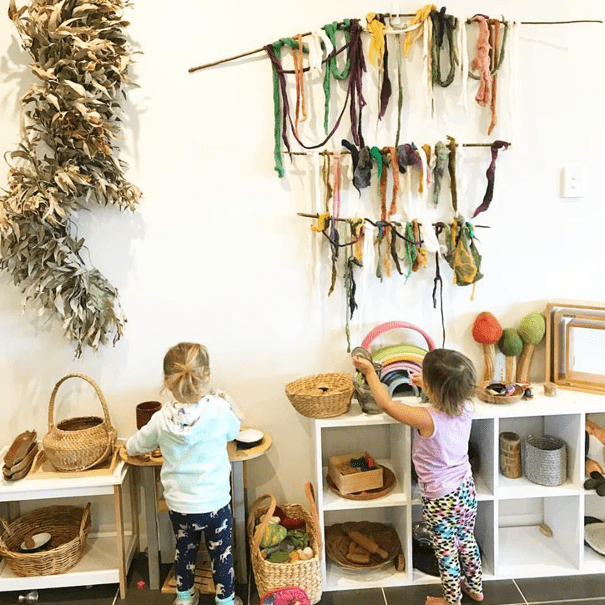
Shared by Clare Louise – The Woodland Child
They can influence how we feel.
Frustrated, angry, happy, sad, proud, calm, energetic…
They can invite imagination.
Do the materials and spaces allow for creative self-expression?
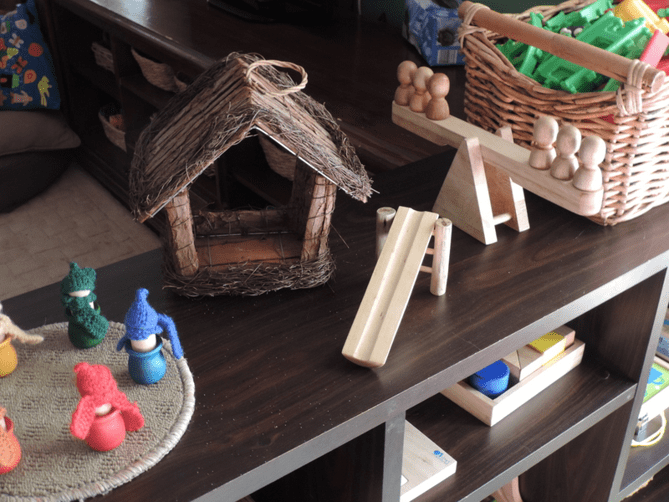
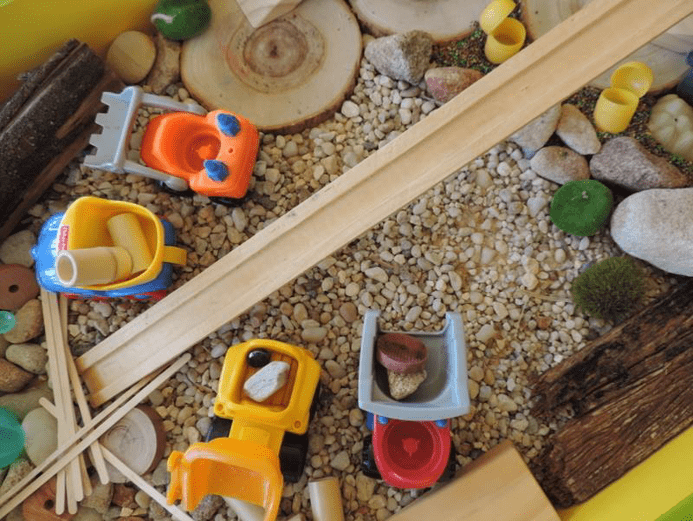
Does your indoor learning space make children feel…
When children enter a well-designed indoor space they know the following…
Simple Ideas for the Indoor Learning Space
Consider the core environmental concepts of sound, movement, visibility, smell, light, texture & colour. Some thoughts for you to reflect on when looking at your spaces…...
Sound
- Music playing - is it just annoying background noise? Can children choose? Does it evoke different emotions and feelings? You can read more about this in my recent blog Music & Movement Activities for Children.
- Consider floor to roof acoustic space.
- Distribute sound using different levels -lofts etc
- Wooden floors echo sound - add sound absorbers like rugs, cushions, textures.
- Diffuse sounds by draping material from roof.
- Think of ways to introduce different sounds.
Movement
- View perspective from the floor and child.
- Add floor coverings that suit different needs and age groups.
- Create smaller, closed-in spaces to explore.
- Are there wider pathway areas in between smaller spaces so each child moves freely?
- Is there room to greet and talk to parents?
- Separate quite/calming areas to noisy/messy.
- Evaluate clutter, storage and accessibility.
Visibility
- Can children see outdoors if inside? How?
- Can children see what is stored in some of the jars, baskets and tubs you use to make decisions and encourage autonomy?
- Are there displays of children's work and the process of learning with documentation?
- How does the furniture setup impact on visibility?
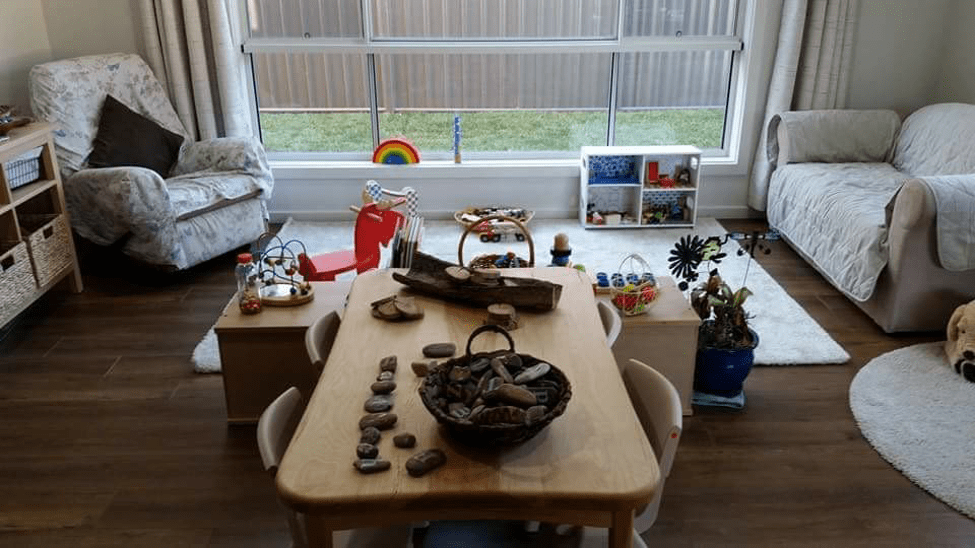
Shared by Janelle Duncan – Curious By Nature Family Day Care
Smell
- Is there a way to invite fresh air indoors? How does it flow? Connected to outdoors?
- Add natural materials like herbs, flowers, scented leaves, damp soil, pine cones, spices.
- Ensure gardening & cooking opportunities with children.
- Consider the cleaning materials used and their fragrance (whether ‘all-natural’ or not - smells from nature can also affect adults and children in different ways!).
Be aware of possible sensory challenges & sensitivities for children and adults using the space
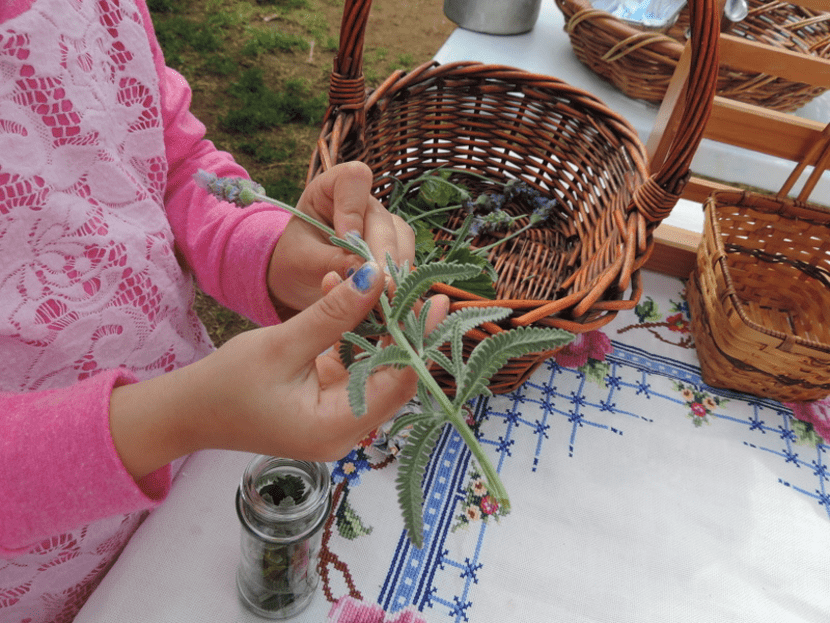
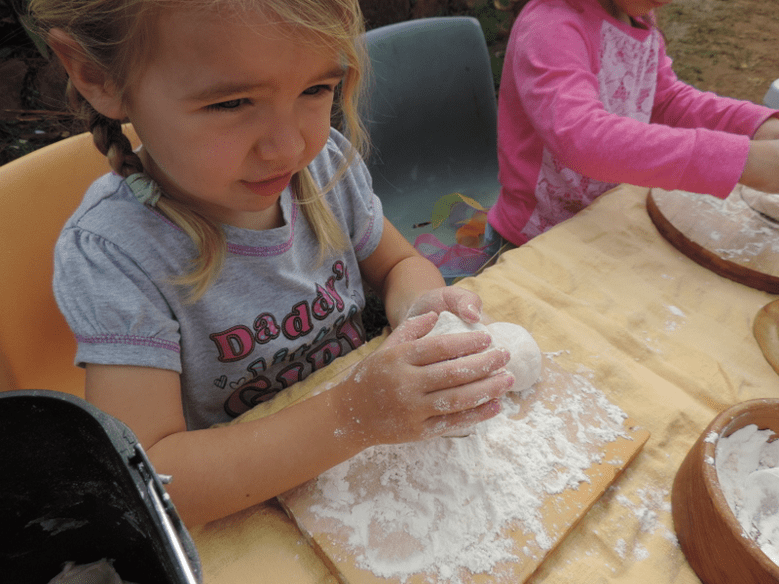
Light
- Is there access to natural light? Are windows clear?
- Consider lamps, lampshades, downlights, scarves and material to drape and soften bright light.
- Offer materials that reflect and bounce light - light tables, mirrors, prisms, crystals, window blocks, torches, overhead projectors, cellophane.
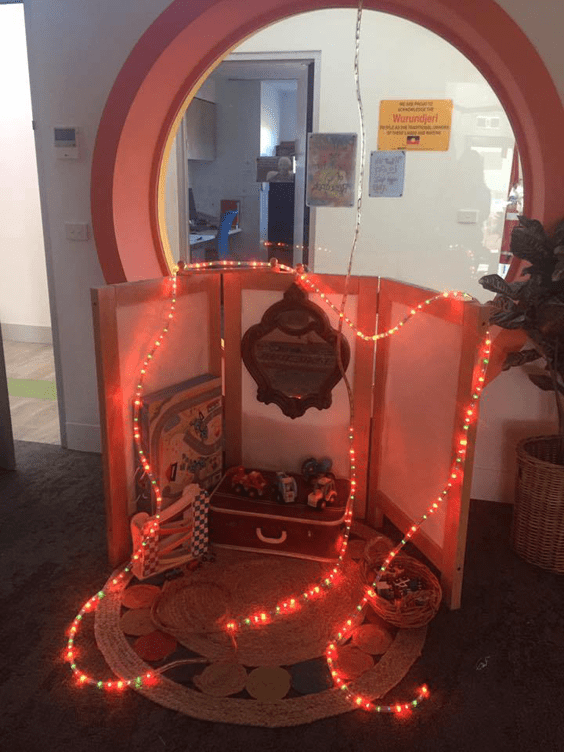
Shared by Poppy Kerakas
Texture
- Texture in a space is essential for the senses.
- Aim to include a variety of different elements.
- Introduce soft furnishings like rugs, cushions, blankets.
- Use baskets for storage & easy access.
- Add real plants and other natural materials if you can.
- Look for opportunities to include sensory creative experiences
- Provide a variety of hands-on elements to pick up, investigate, touch.
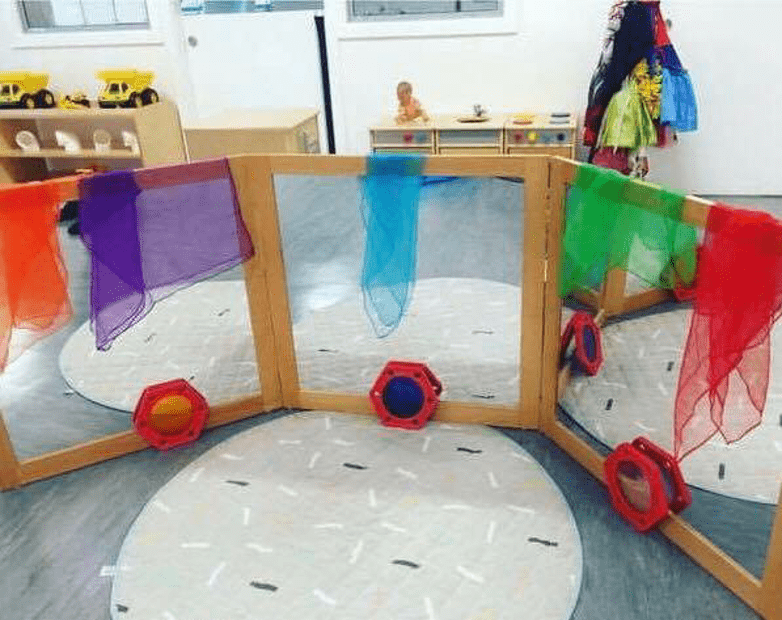
Shared by Josephine Lorna Rayner
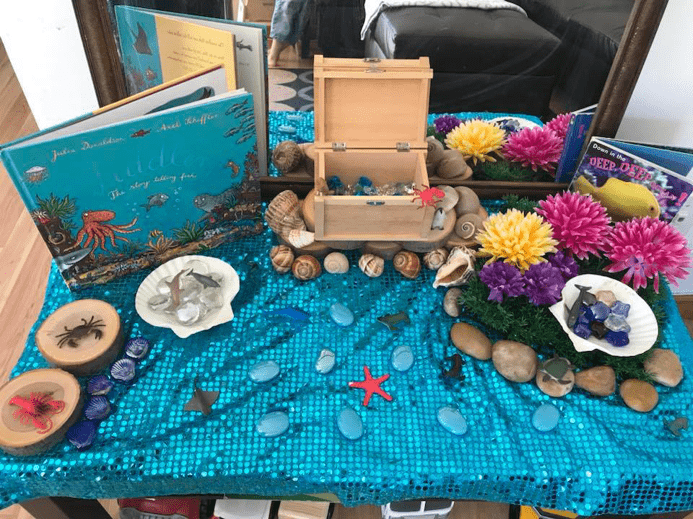
Invitation shared by Belinda Bryce
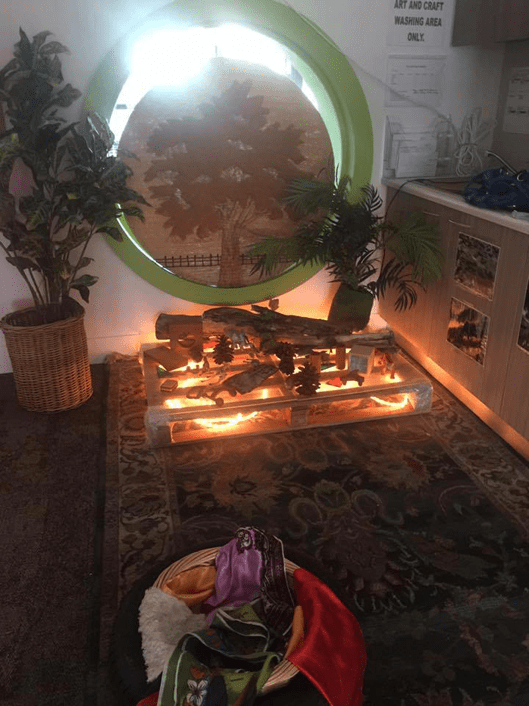
Shared by Poppy Kerakas
Colour
- Too much bold colour can be overwhelming to some adults and children.
- Be mindful of overuse of images & displays.
- Think about how you present your art materials
- Ensure colour mixing opportunities
- Add colour to sources of natural light to highlight
- Neutral paint colours & furnishings often promote a sense of calm and home.
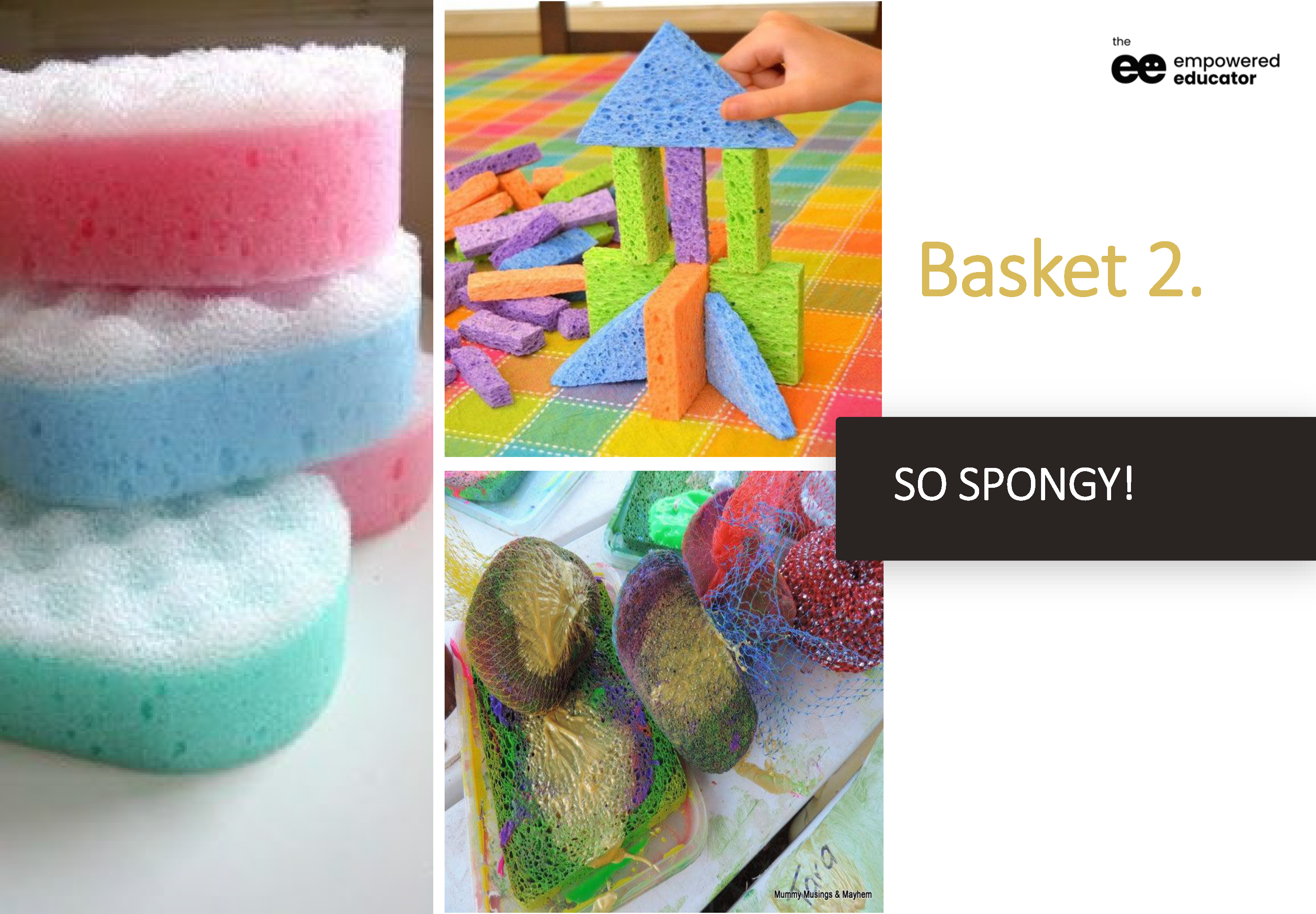
Need some ideas to invite open ended play experiences using everyday and upcycled materials? Click below for a FREE Empowered Ed visual action guide...
14 Tips to Ensure the Indoor Learning Space Offers Children Opportunities for Accessibility & Self-Selection
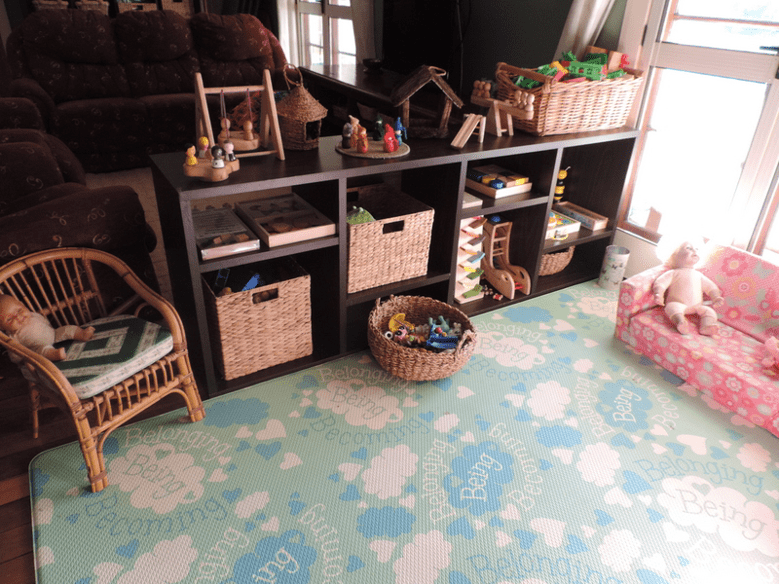
- Avoid disorganisation & clutter where possible.
- Ensure a selection of a diverse range of materials.
- Label storage shelves, buckets, walls and different spaces with text or images. You might find these printable signs helpful.
- Involve children in making labels -use drawings or photos.
- Use furniture to meet the needs of different ages.
- Set up the space to send a message of 'I can do things myself here' to the child.
- Organise regularly for easy use and independence.
- Keep loose parts easily accessible to move around the space.
- Provide simple visual cues throughout space. I like to use visual routine cards for younger children to help them navigate transitions and their day to day activities. If you like the idea of a visual routine you can download my printable cards and suggested ways to use them here.
- Arrange materials to use space wisely.
- Use a mix of closed and open storage.
- Plan ahead on the program to define resources needed.
- Store like materials together so they are easy to find
- Try to leave some outdoor spaces ready to 'play again' tomorrow to extend on current interests.
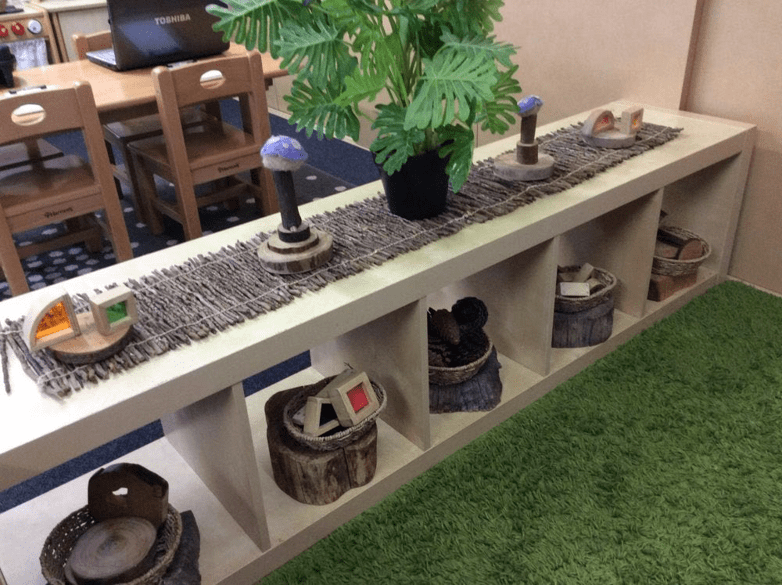
Shared by Sarah Hart
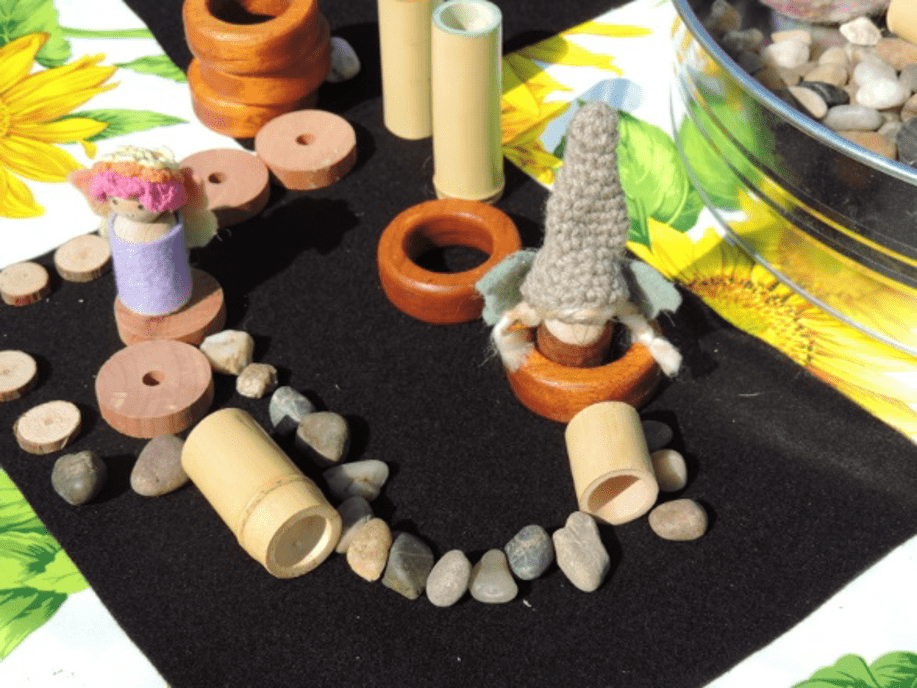
8 Simple Tips Educators can Use to Create Respectful Displays
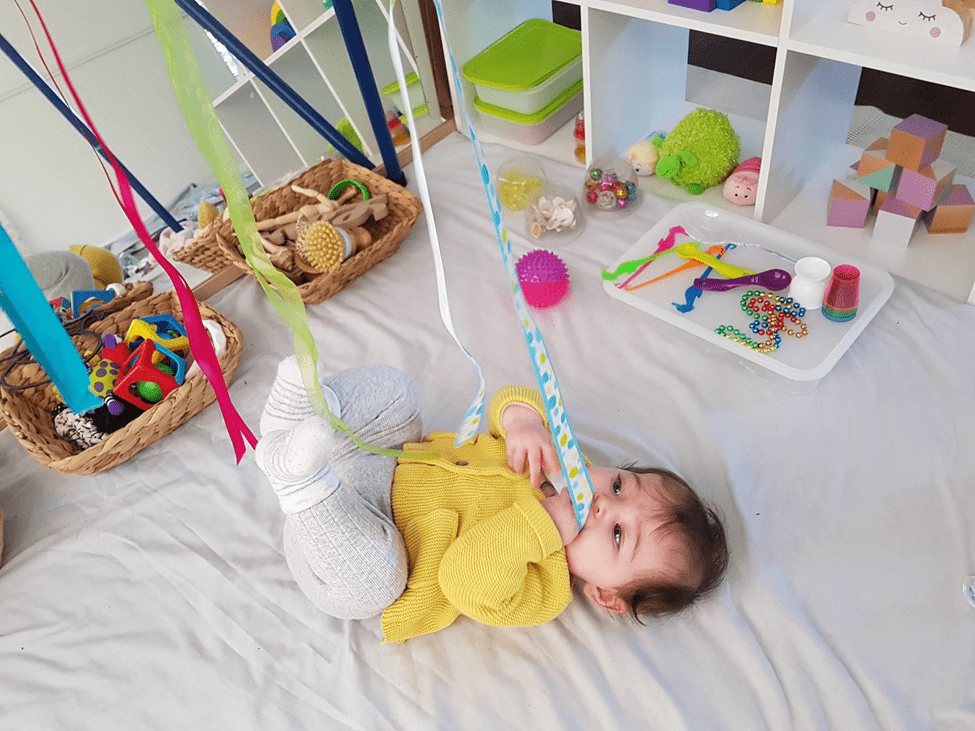
Shared by Rebecca Wilson
- Keep down at a height children can view & access
- Don't turn it into a wallpaper effect or too busy
- Keep the art, children’s work or photo of play the focus - not the borders or pretty paper backing.
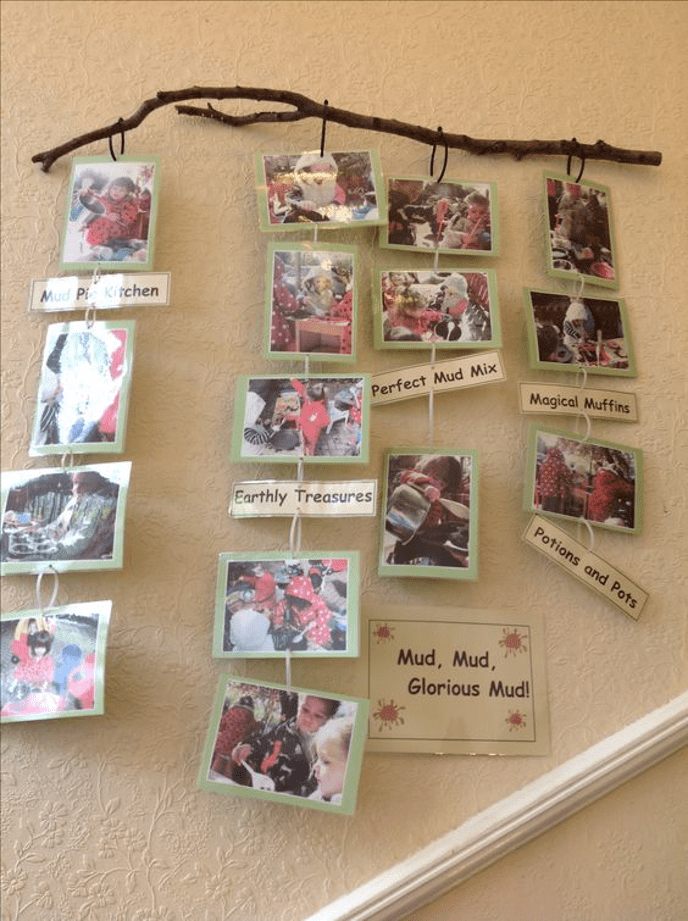
4. Include the child's voice wherever you can. Read through this blog post for ideas on how to help children self reflect and share their voice in different ways.
5. Keep displays relevant & something children and families can connect with and understand.
What can Educators use to help create interesting displays in the indoor learning space? Here are a few ideas to get you thinking….
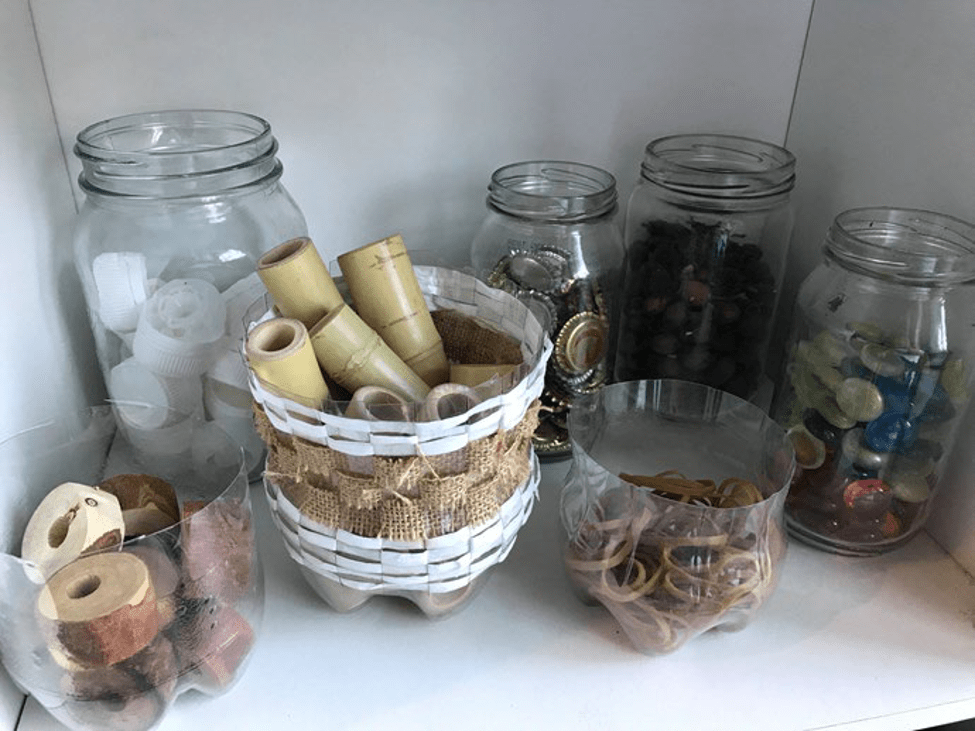
Shared by Renata’s Family Daycare
Invitations to Play in the Indoor Learning Space
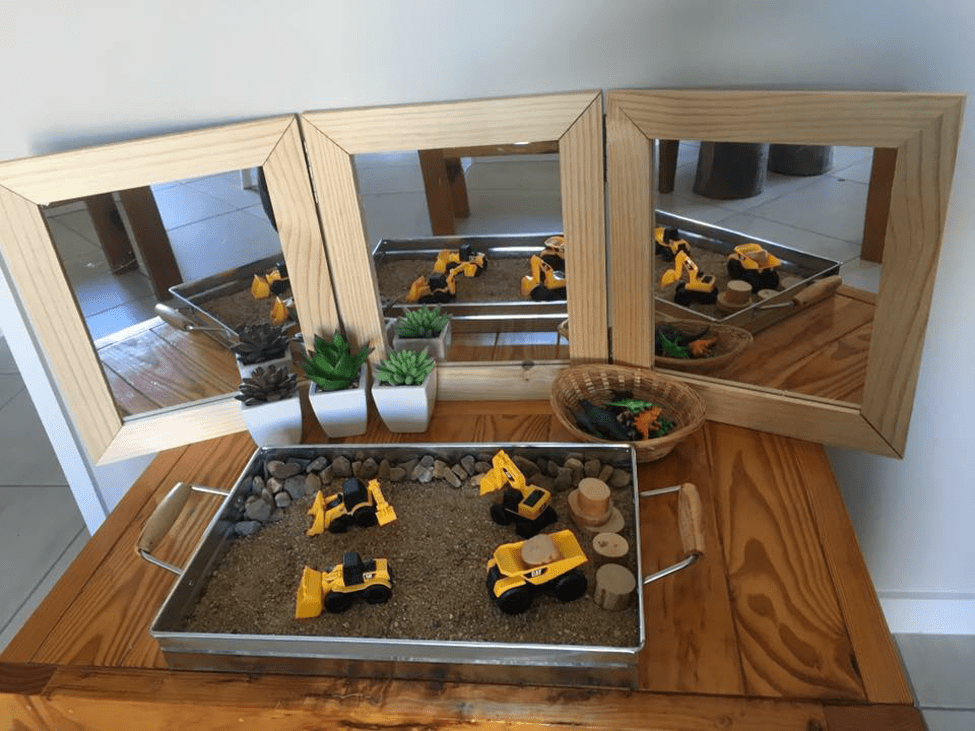
Shared by Tiffany-Ann Louise – Little Rays of Sunshine Family Day Care
Why use them?
- Allows opportunities to extend upon children's interests and creativity.
- Provides a way to incorporate natural and recycled materials.
- Prompts children to investigate and explore while also encouraging them to use their imagination and thinking skills.
What should we consider?
- The ages and developmental stages
- Using too many props and resources.
- Supervision and modelling.
- Think outside the box with materials.
- Letting the children change the activity
- Consider bringing the indoors out/outdoors in
- Intentional teaching opportunities
You can read more about how to incorporate invitations to play and be inspired to use them for tabletop play here and with nature play here.
Throughout this article, you will find examples of a variety of different indoor learning spaces from around the world. This is just a small selection of spaces and possibilities obviously, but hopefully, you will find an idea or two to inspire you and along with the tips I have provided above, help you feel motivated to take a look at your current environment through fresh eyes and maybe try something different!
Now let’s take a wander through some inspiration shared by other educators….
Book Corner Inspiration
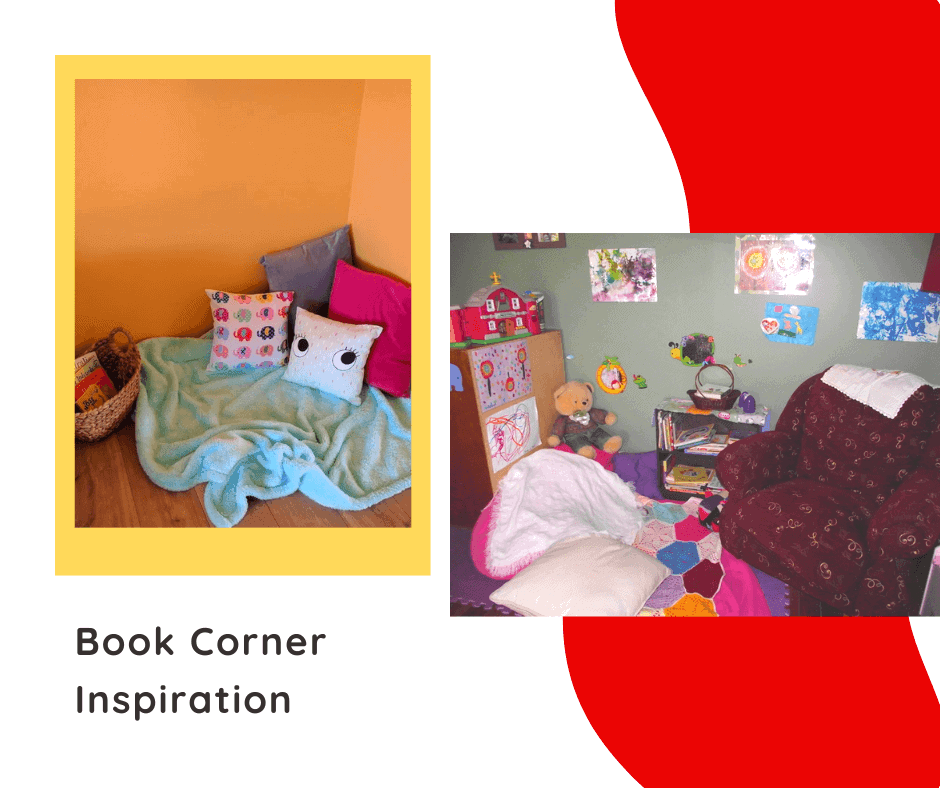
Lauri from our Facebook Group shared this lovely reading area,
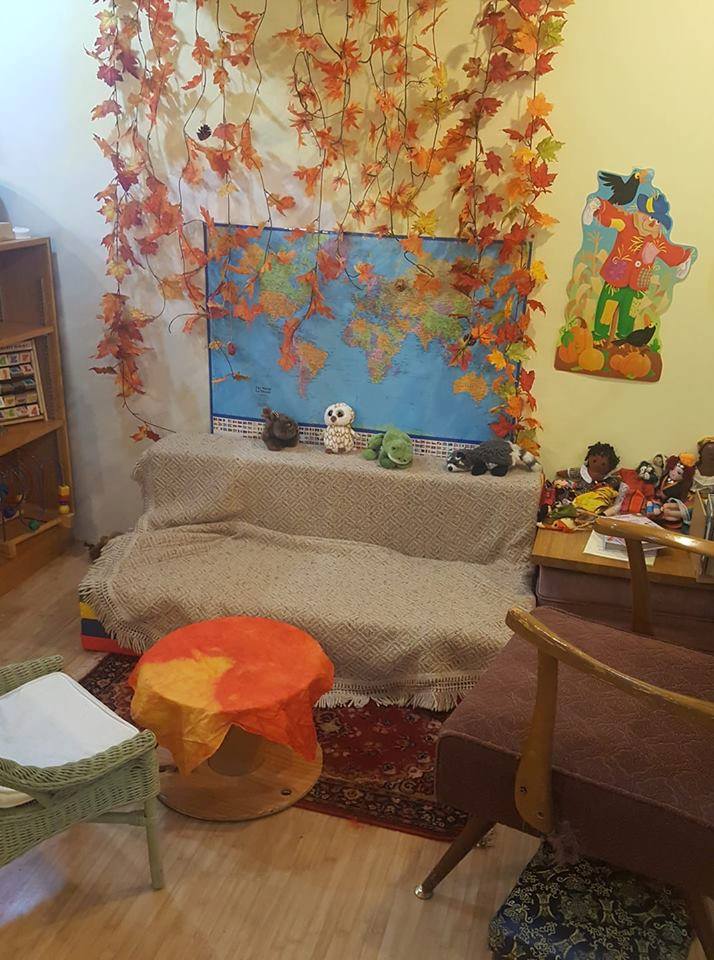
Rachael also shared her reading nook in our Facebook Group. How cute are those chairs!
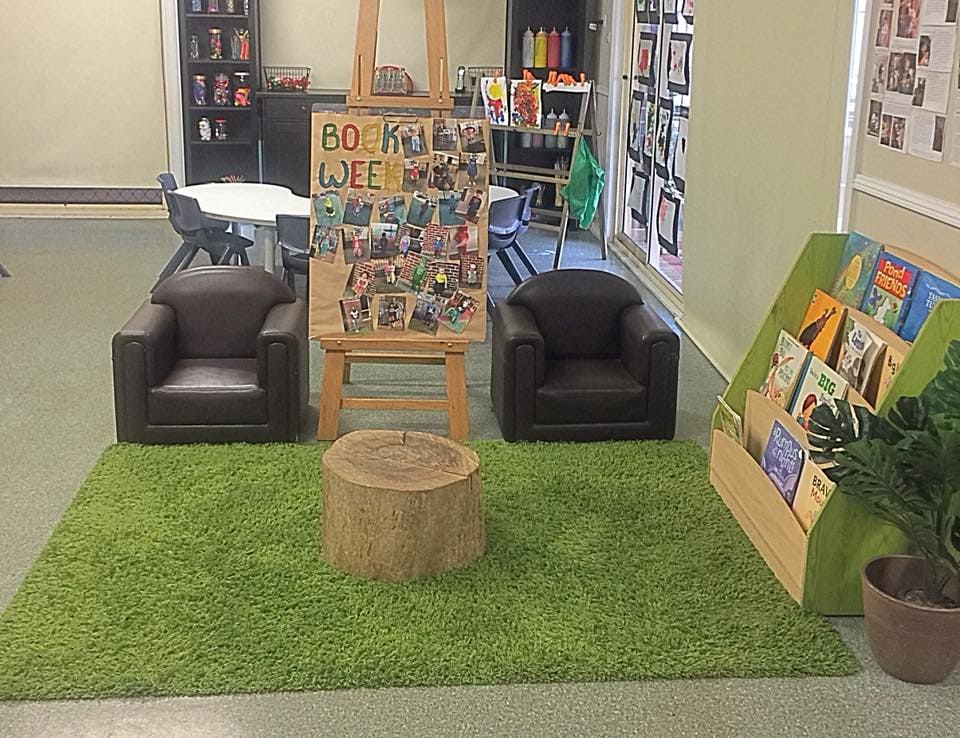
Nicole from Sparrow Early Learning shared this simple baby book area - lots of texture to explore here!
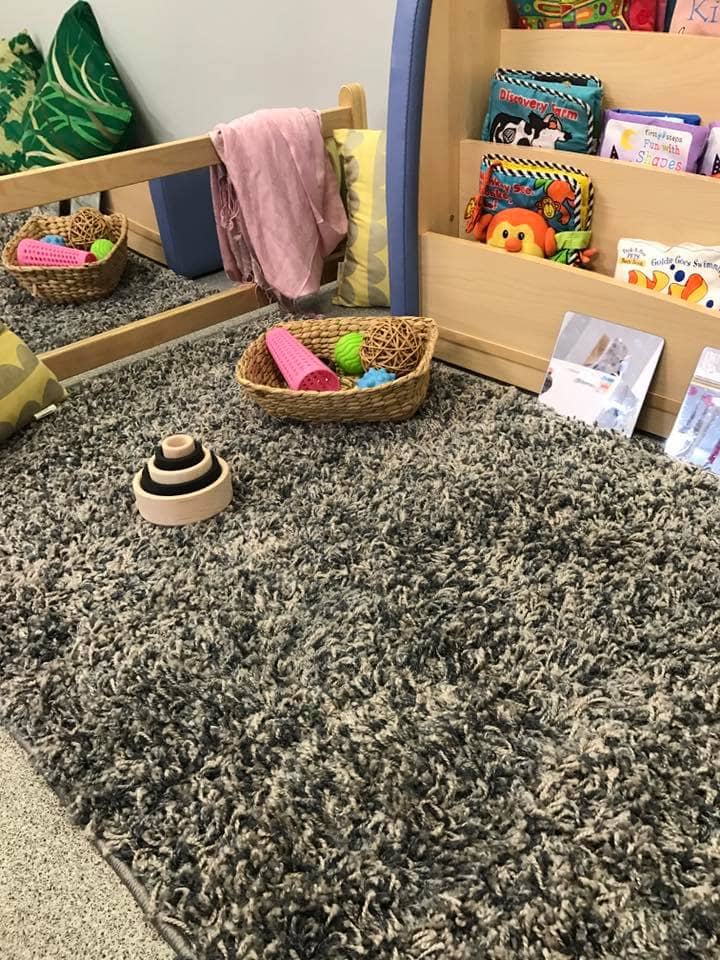
Jane shared her reading area along with a sign that the children helped to make using pages of old books.
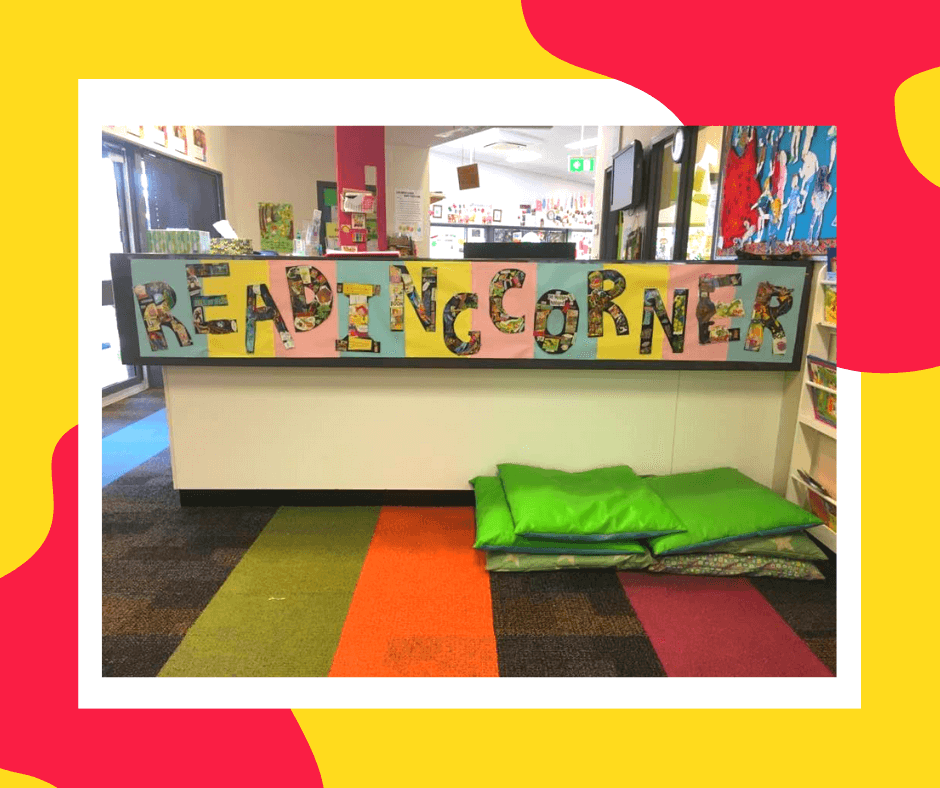
Jyacinth shared her easy to set up reading area which is perfect if you have limited space. She used a supersoft blanket, cushions and a basket of books (changed regularly) that the children can easily access.
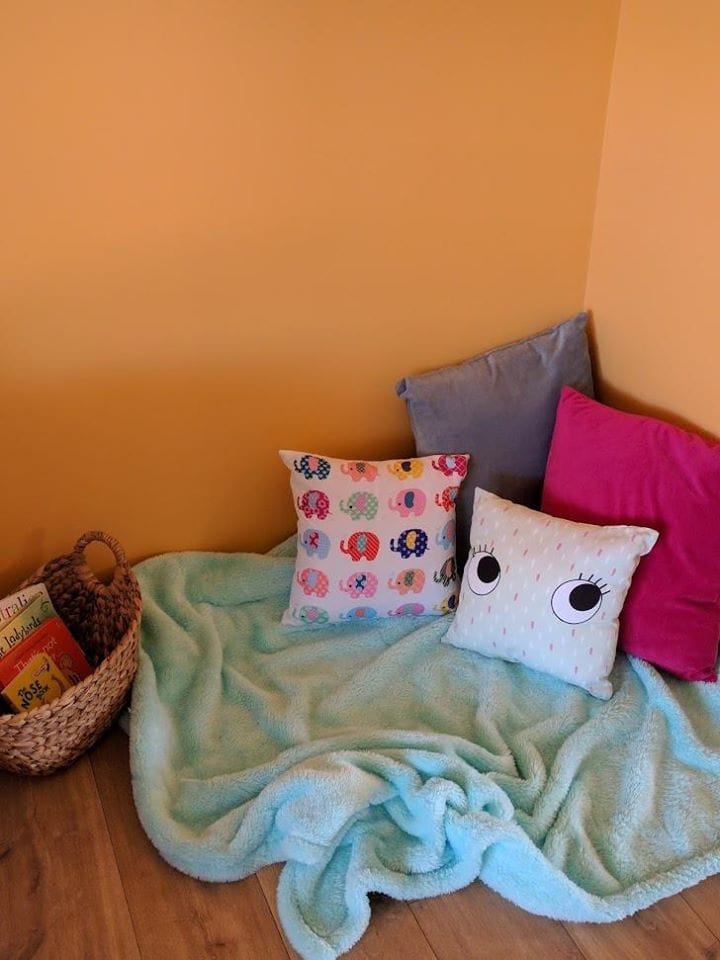
Aimee's reading corner (also shared from our group) is one that you can easily replicate in your own space.
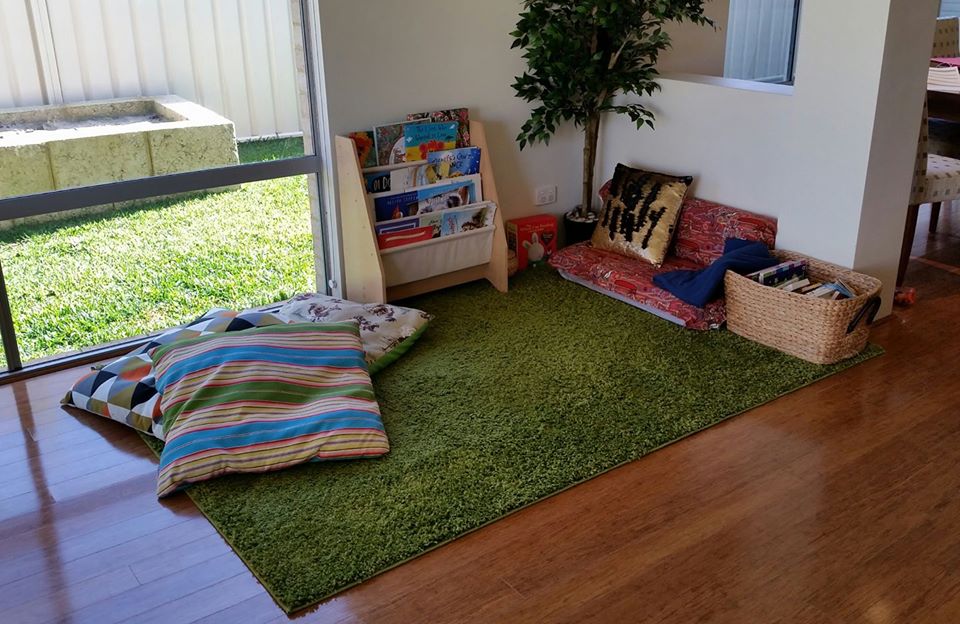
Reading and soft spaces certainly don't need to be fancy - the children used to love helping me move this old mattress around the house for Family Day Care and help set it up the way they wanted to. It became our mobile book corner...not pretty but they loved it!
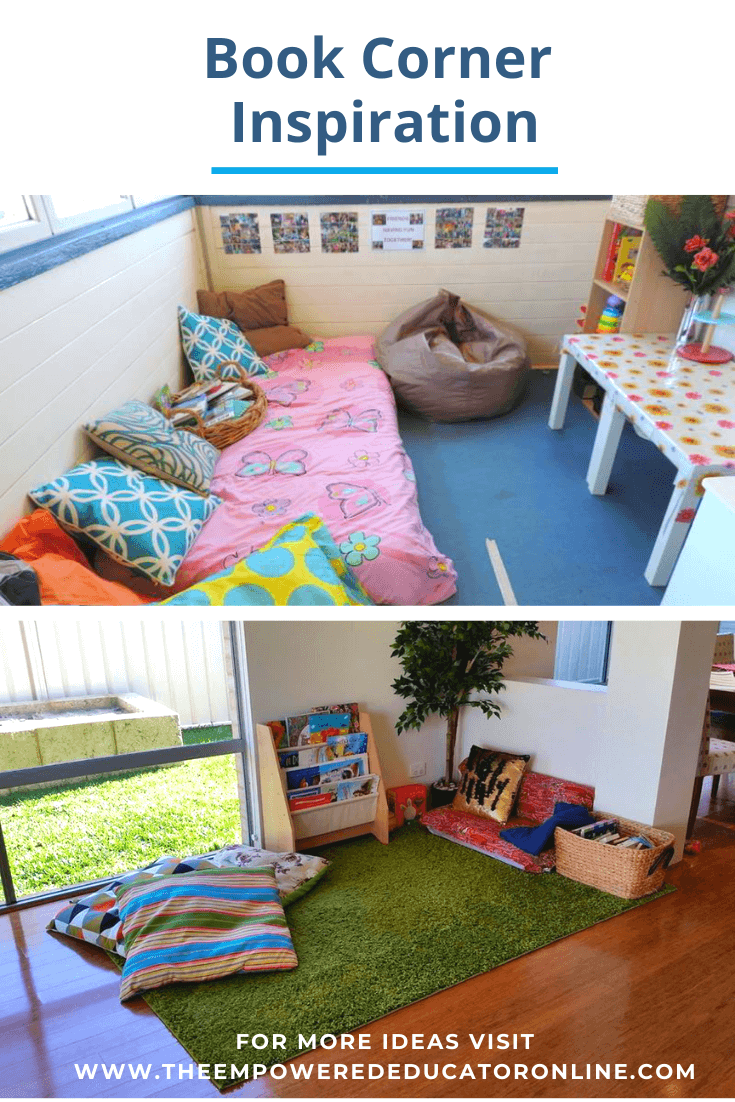
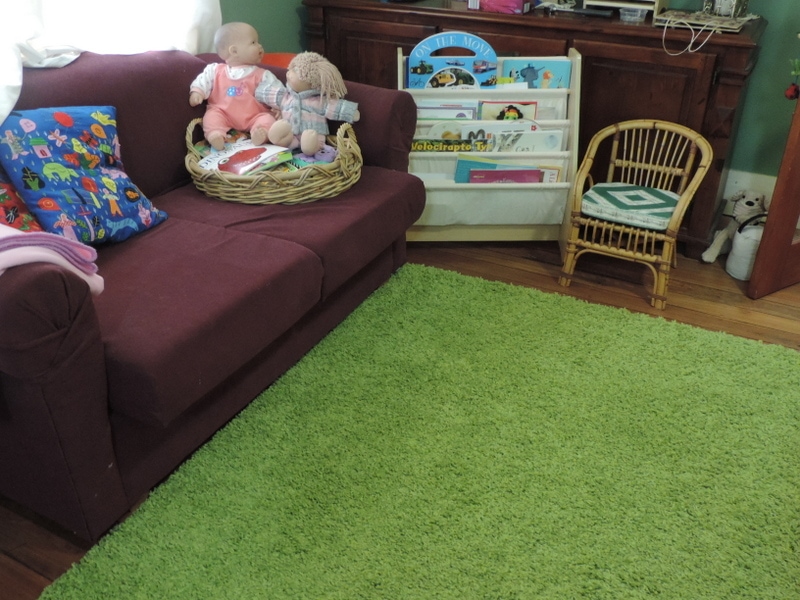
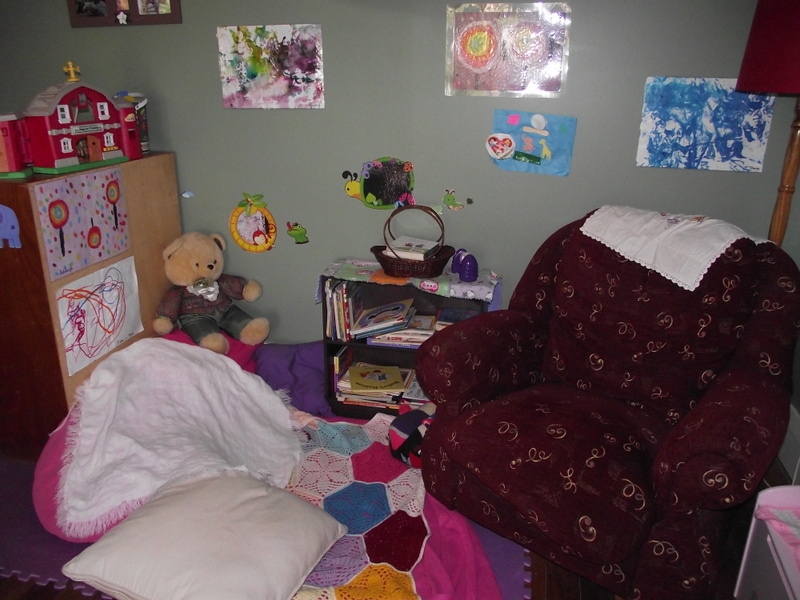
Pretend Play / Dramatic Play Areas
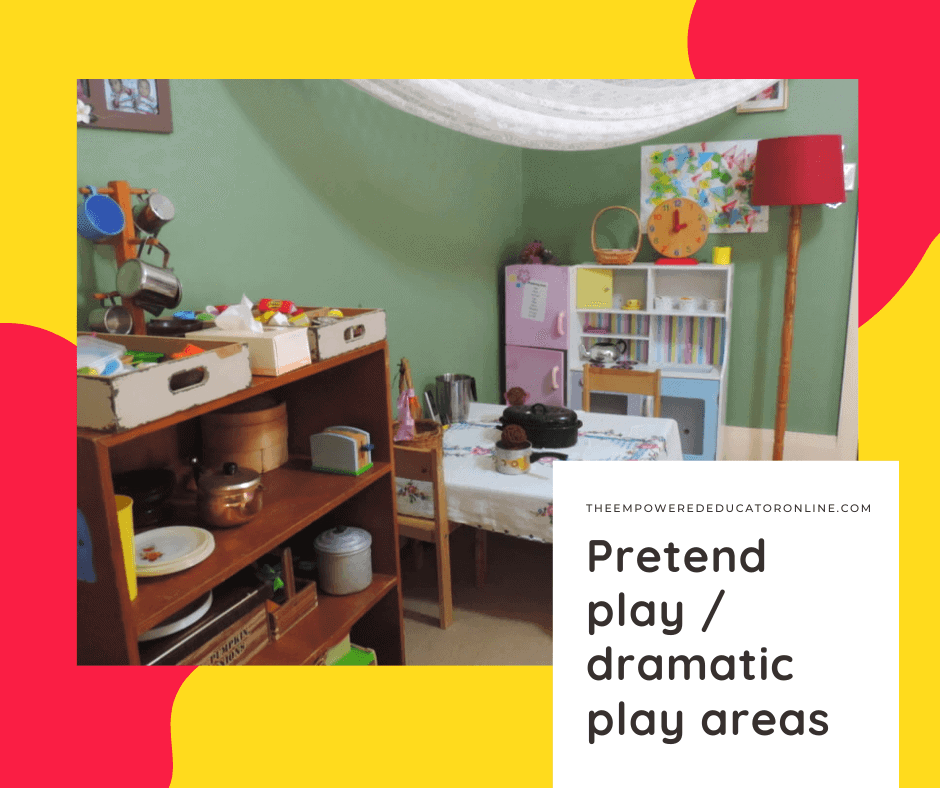
I love to set up dramatic play invitations and spaces - big and small!!
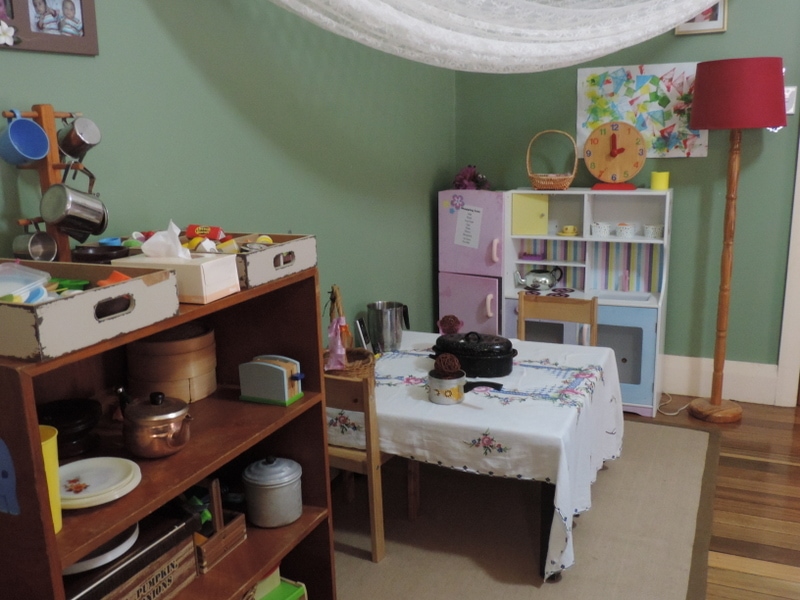
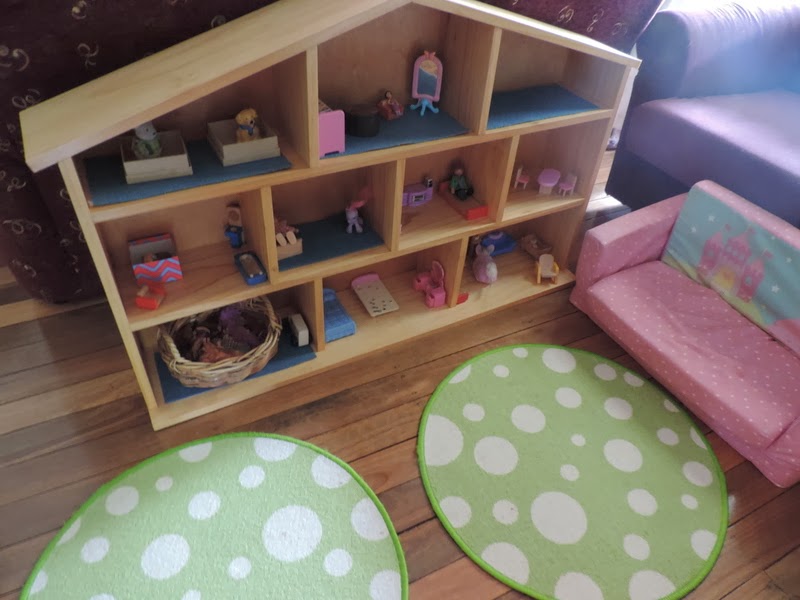
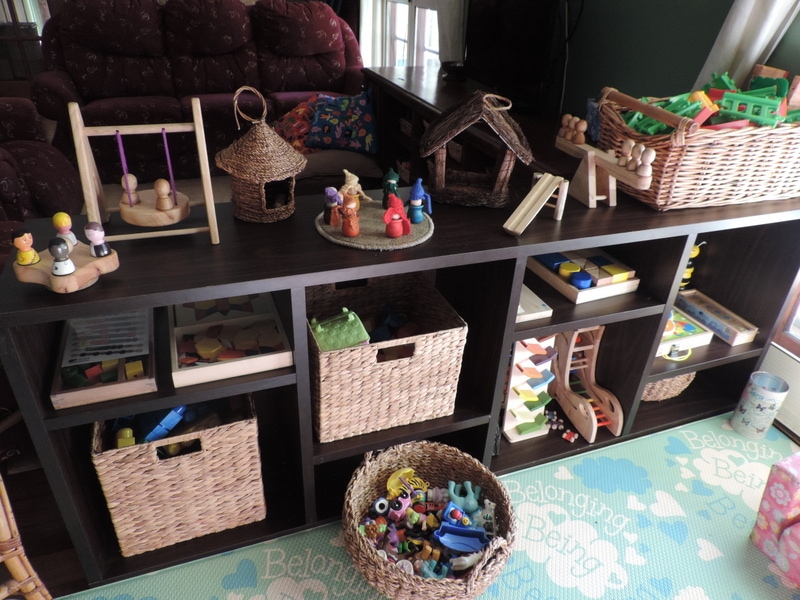
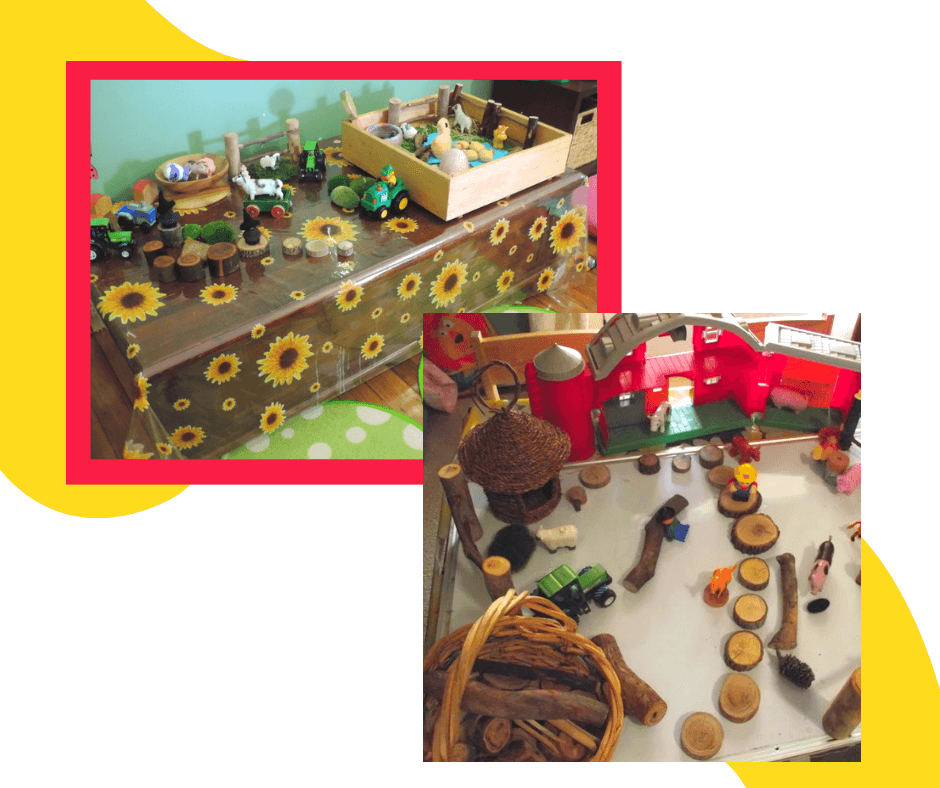
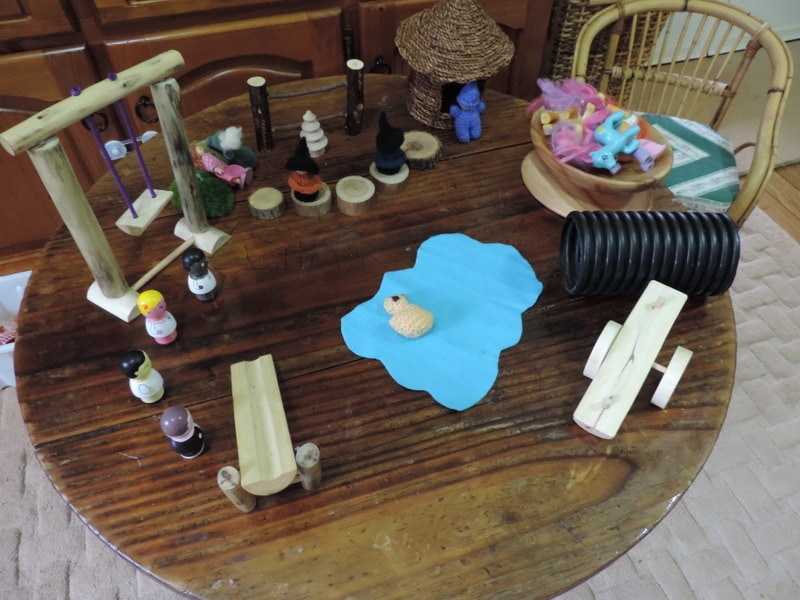
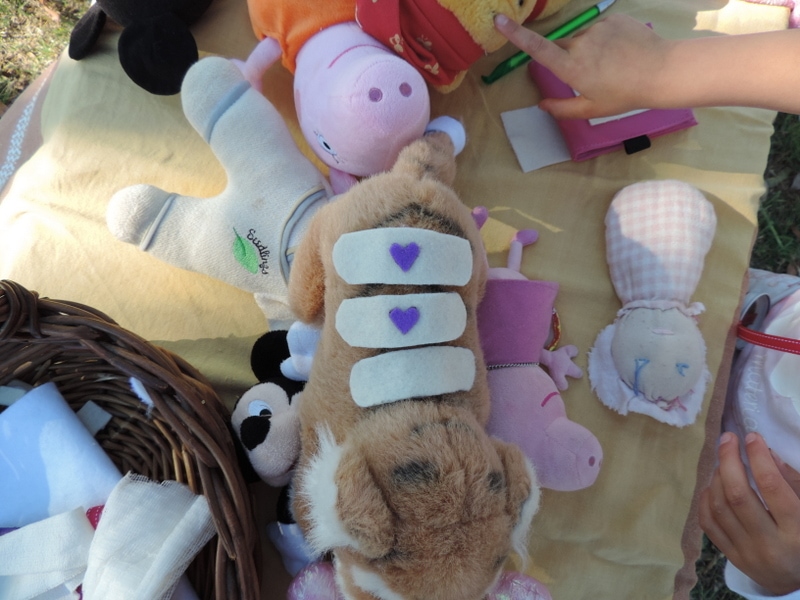
Tiffany-Ann Louise from Little Rays of Sunshine Family Day Care shared this sweet home corner space with us.

Natasha shows us how she sets up a pretend play space in her home.
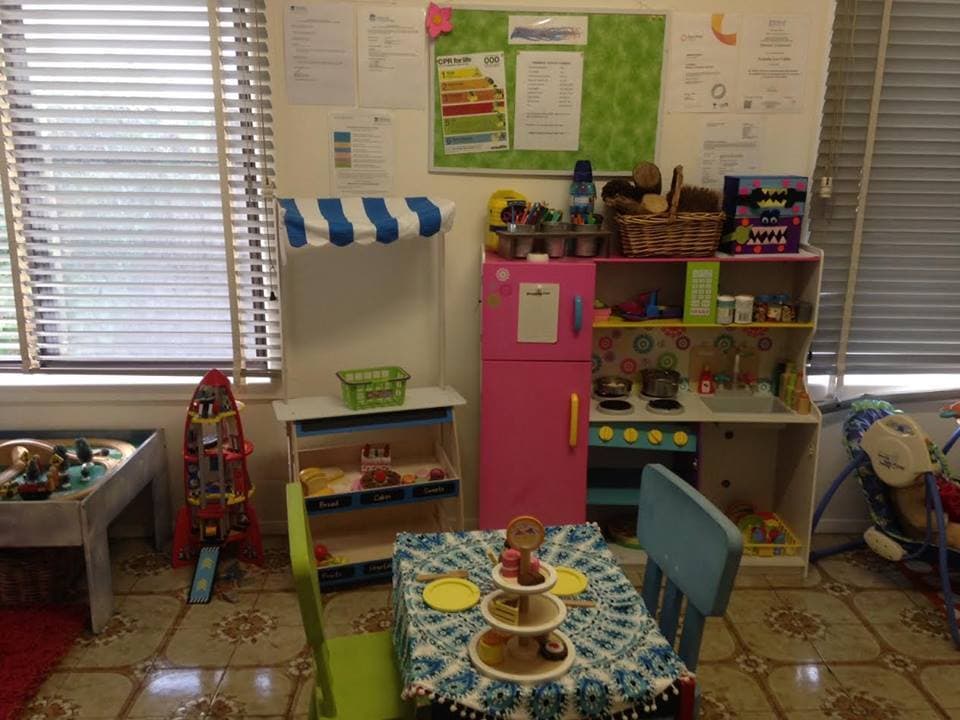
Marie turned a simple table into a checkout - a good reminder to work with what you already have at home.
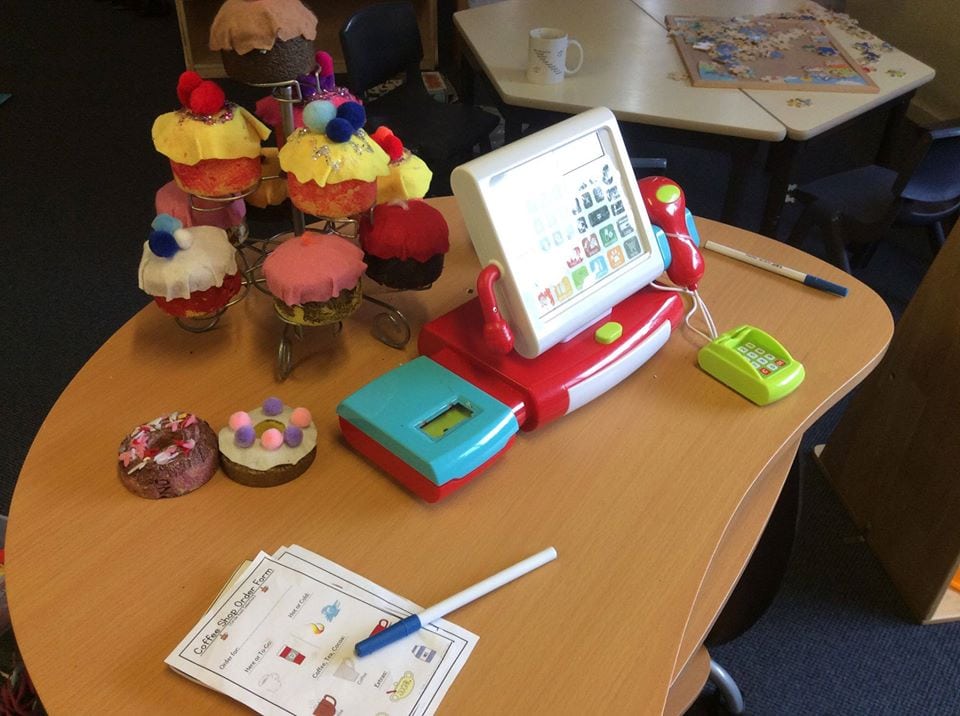
If you are short on floor space using the wall is a great way to set up a construction themed dramatic play area without using too much room - this photo can be found here.
Ever thought about taking your dramatic play outdoors? Click here for inspiration and ideas to keep it simple!
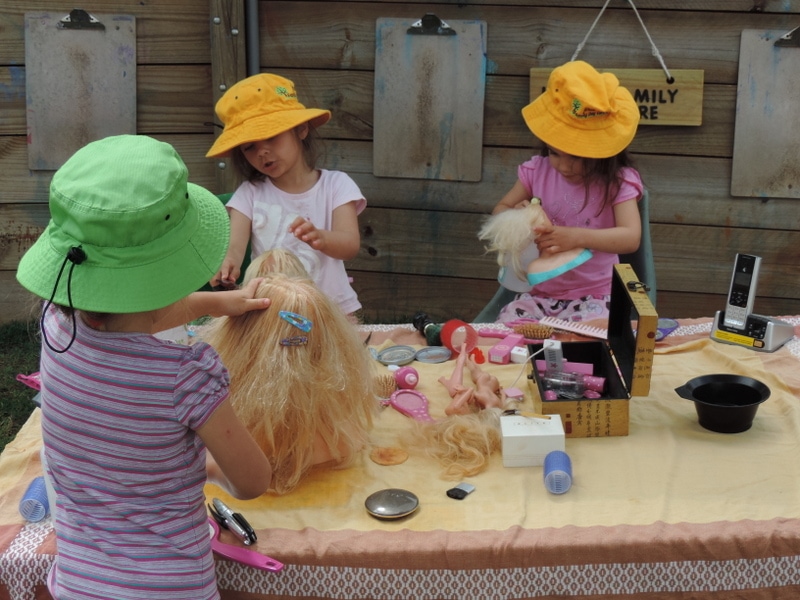
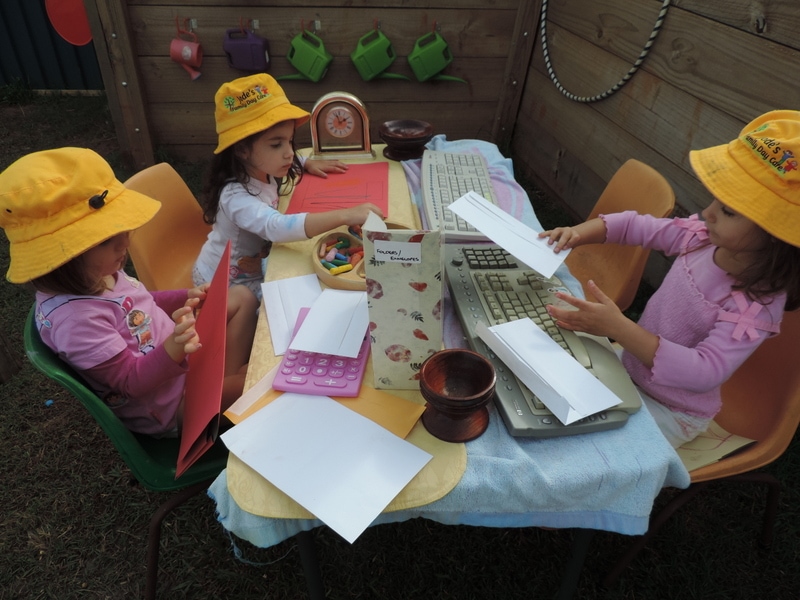
You might also find my post on how to put together dramatic play prop boxes here useful as well!
Block Play Areas
Block areas can be big or small, on the floor, table or sticky wall, indoors or outdoors....or just the floor! They are such a wonderful resource for all ages...and they don't even need to be 'traditional' blocks!
You can find more ideas for extending block play in this blog post.
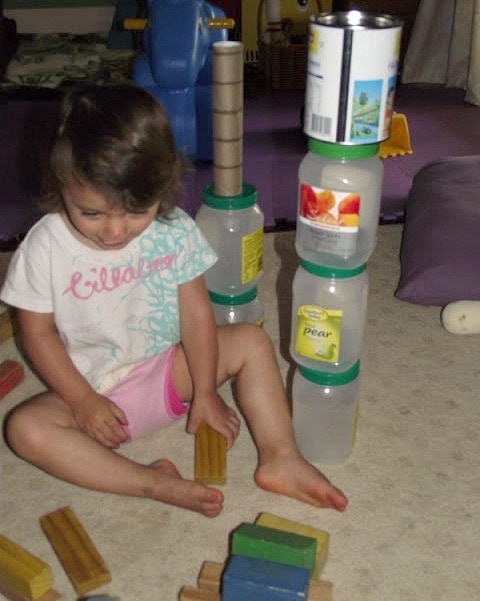
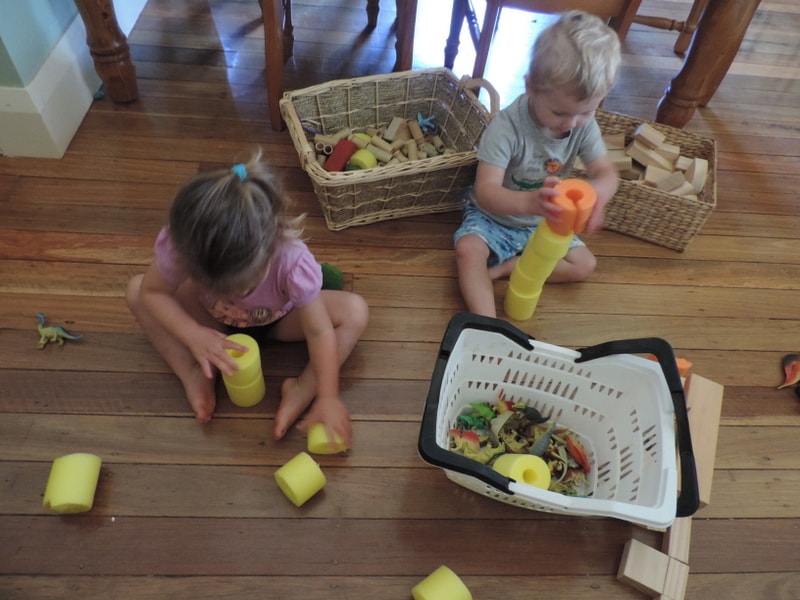
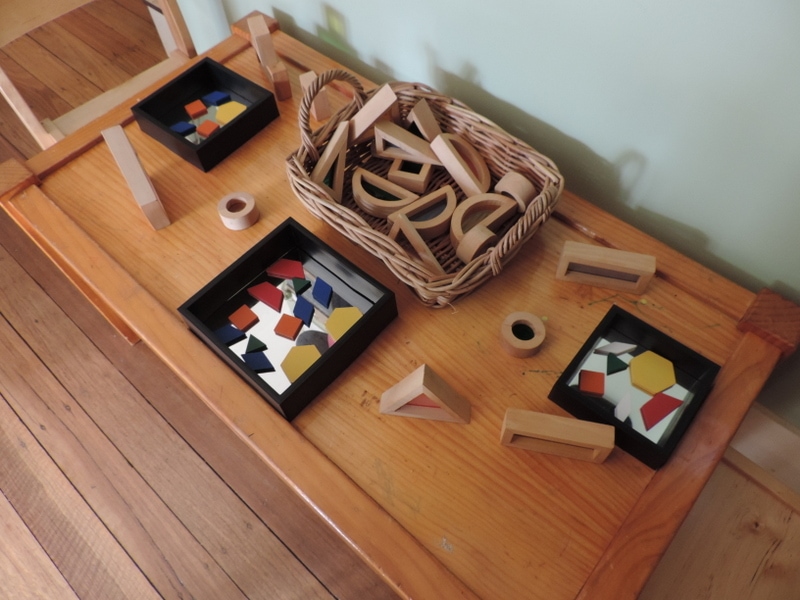
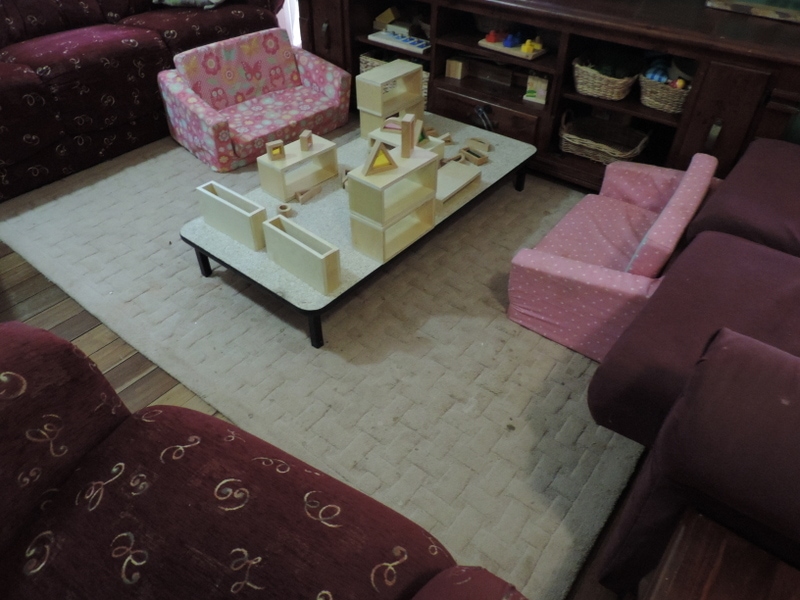
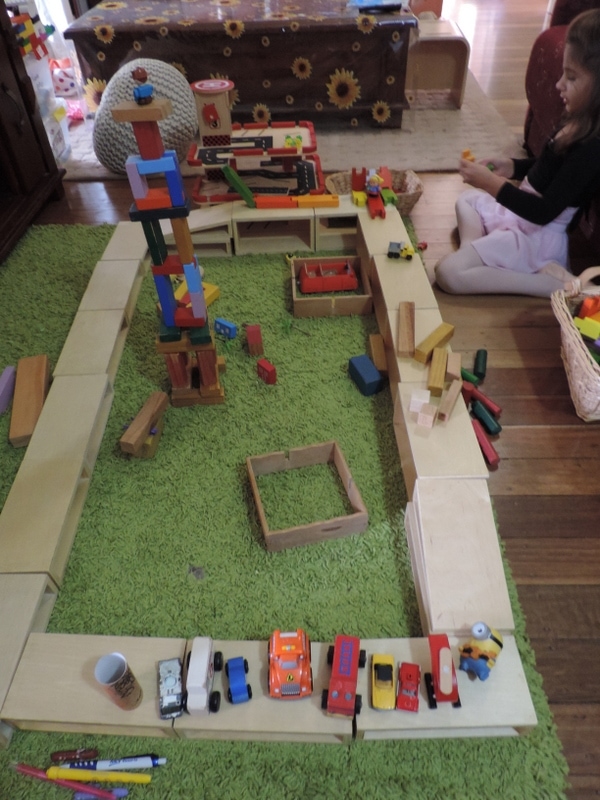
TransformED uses mirrors in her block play area.
This storage idea shared on Instagram makes a very inviting block play area
This block storage idea was shared by Early Excellence
Lynda Weggelaar showed us how she presents her loose parts and blocks for play. I love the addition and presentation of the Cd’s and the plain wrapped boxes to use as bases and blocks…or whatever the children decide they might be!

Loose Parts Storage Ideas
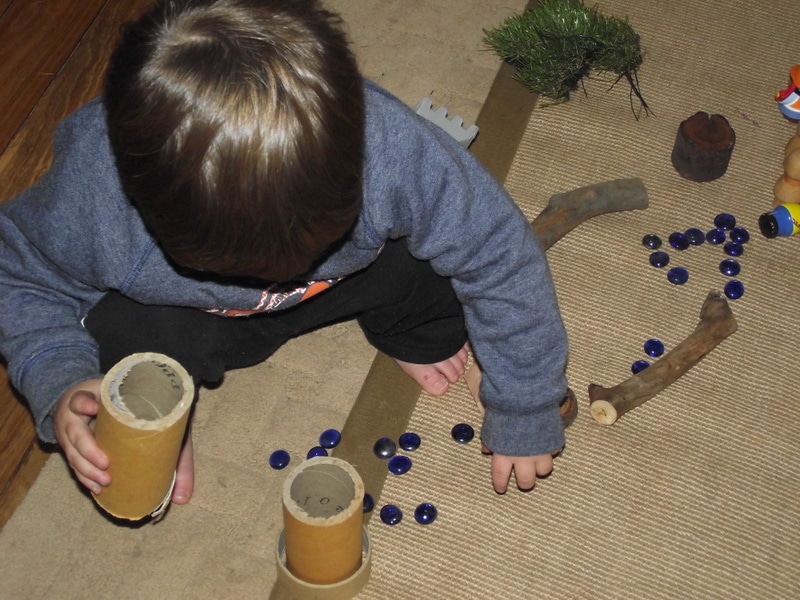
Sharlene Jury shared her loose parts play/storage area with us – so inviting with interesting open ended materials for children to explore, choose and add to their play.

Love the idea from this site to use recycled boxes to store your recycled loose parts.
Use a corner space for your loose parts storage - source HERE.
Growing Inch By Inch uses baskets and containers for her natural loose parts play storage
So much for little hands to easily access and incorporate into their play! Shared by Clare Louise – The Woodland Child
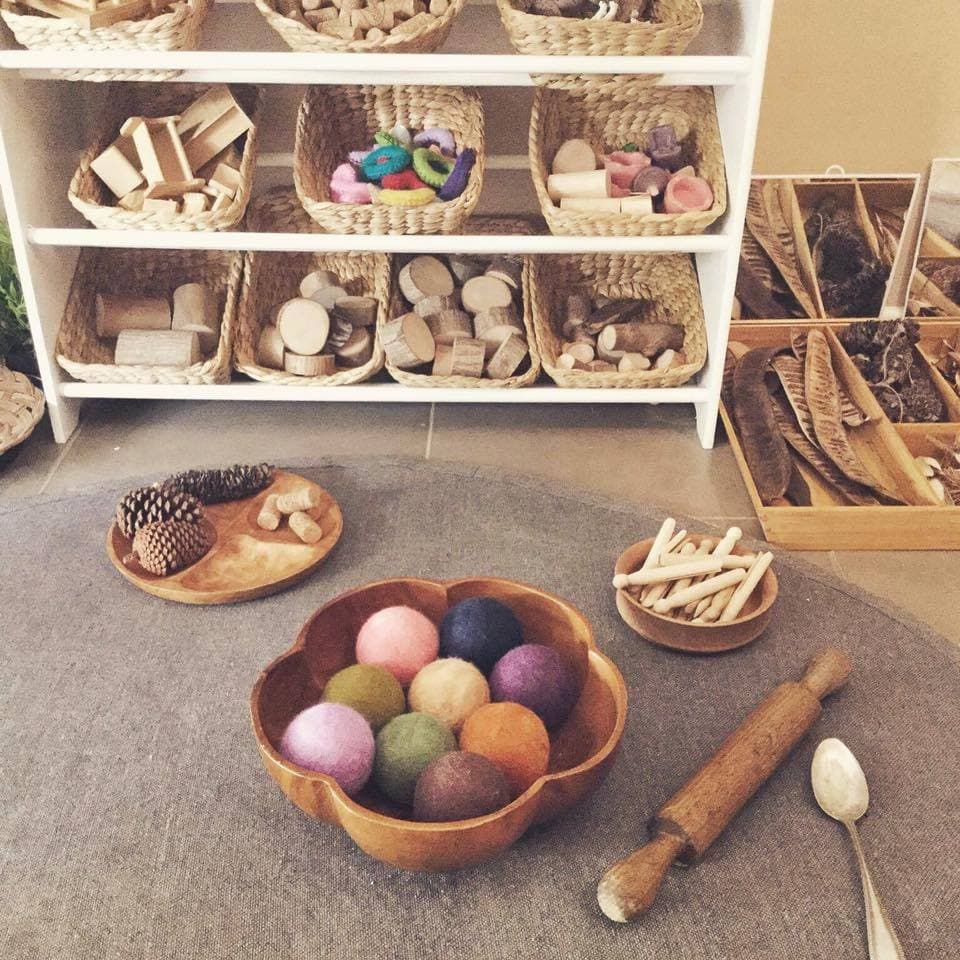
Easily accessible loose parts treasure baskets for baby play! Shared by Rebecca Wilson
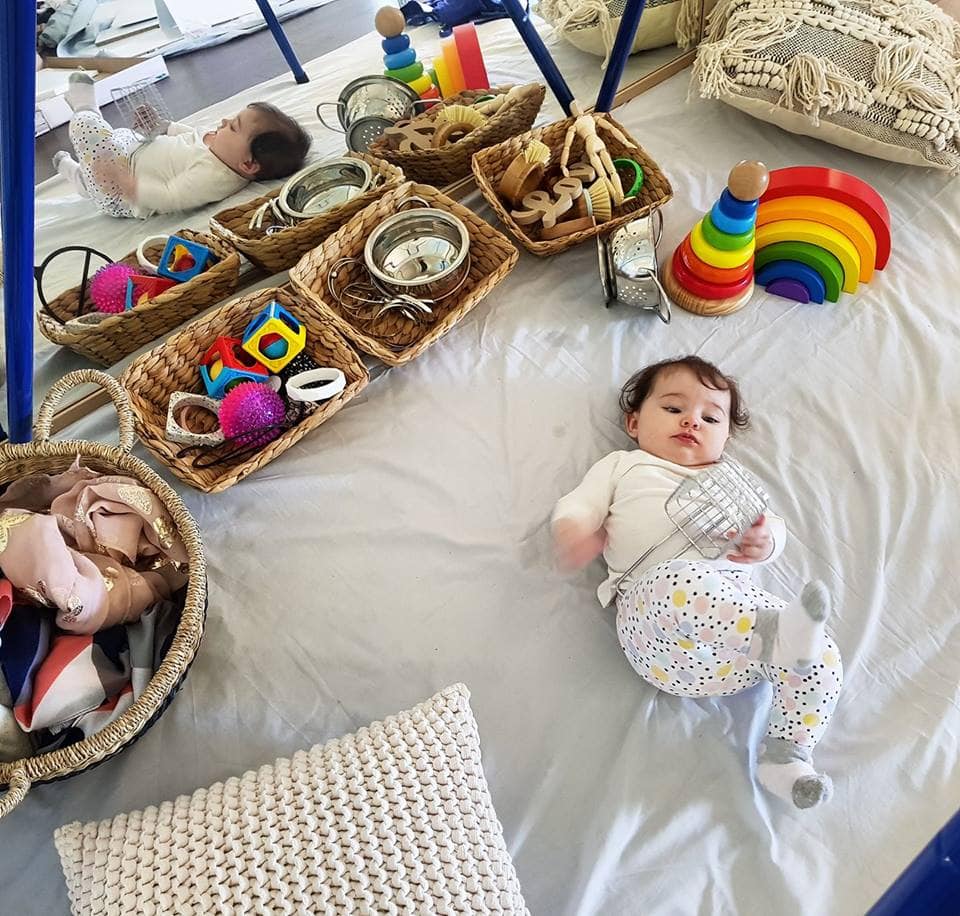
Indoor Space Setups
While it's always helpful to see individual space ideas, I get asked a LOT for inspiration for the whole area and how people bring the smaller spaces indoors together. The pictures below are from our Empowered Educator Facebook group members and give you a great insight into real ways that educators set up their spaces in centre and home based environments.
A beautiful space to belong and connect. Shared by Sarah Hart
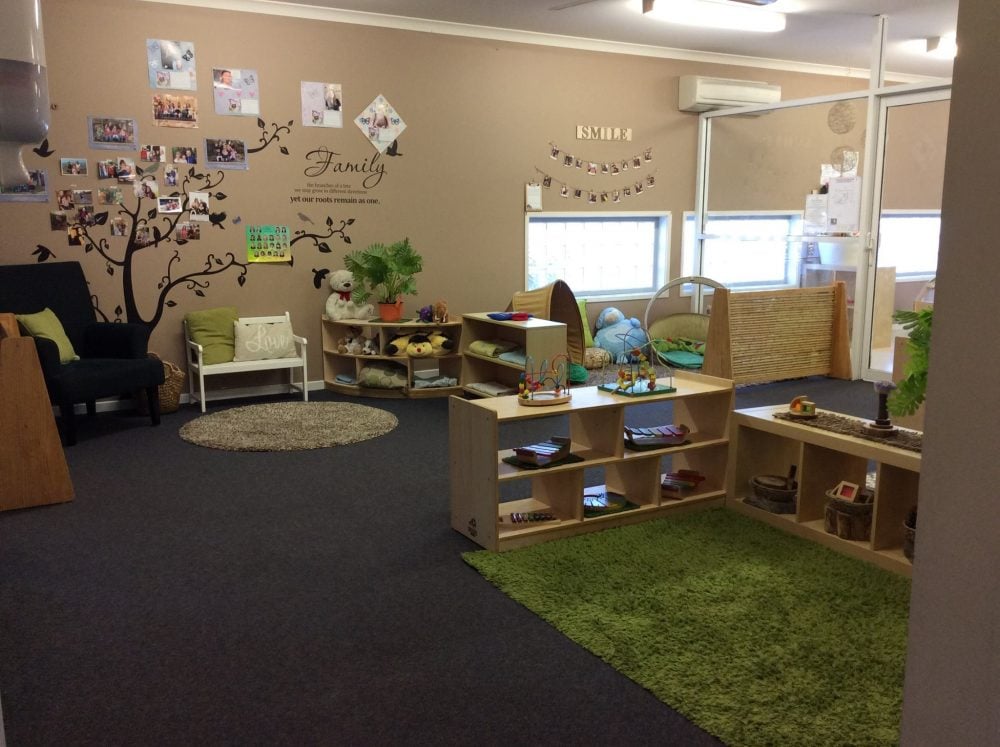
Vicki shared her evolving indoor space with us - lots of interesting smaller spaces and invitations to explore here!
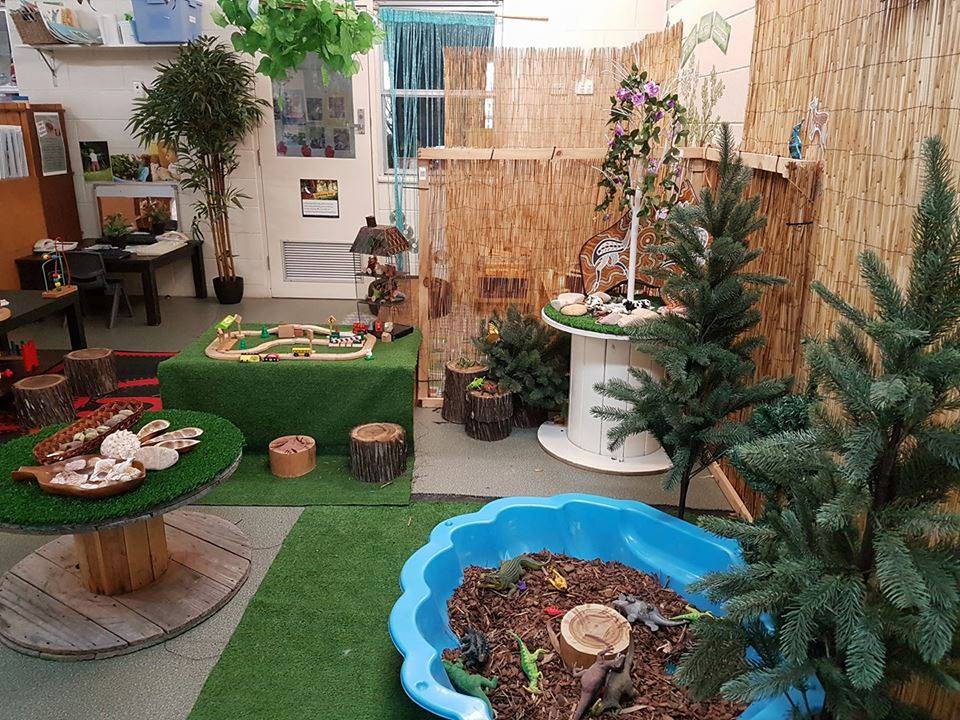
Michelle shared this photo of her indoor area - I'm sure we're all a bit jealous of how tidy her toy storage looks!
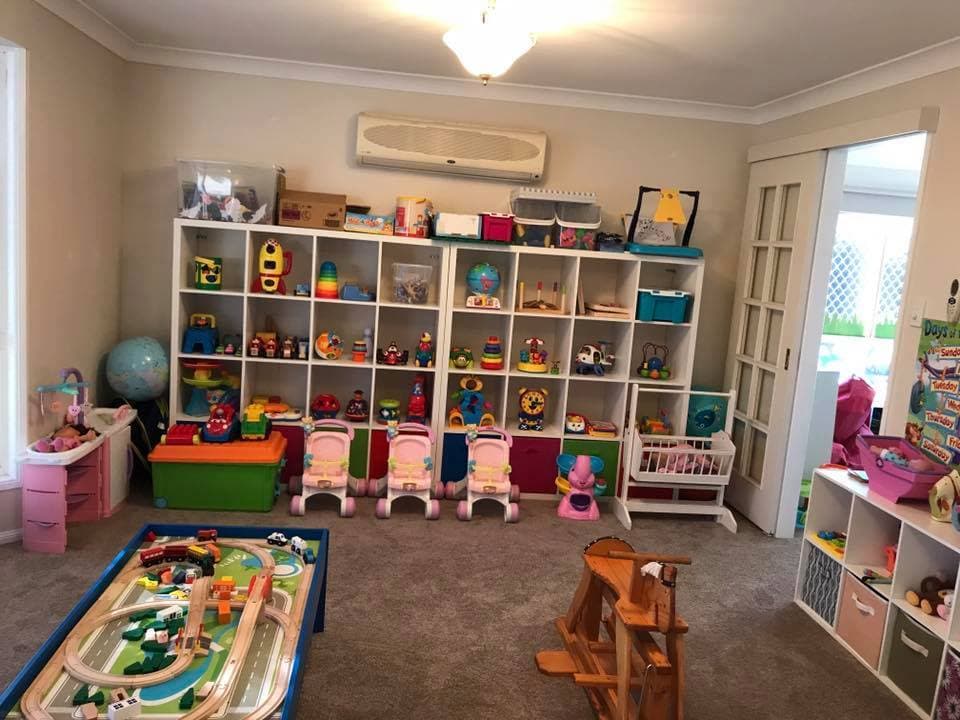
Lorna shared these snapshots of her indoor spaces - a comfortable chair for adults is a must have (yet often neglected!) essential for early years spaces, especially when working with babies and toddlers!
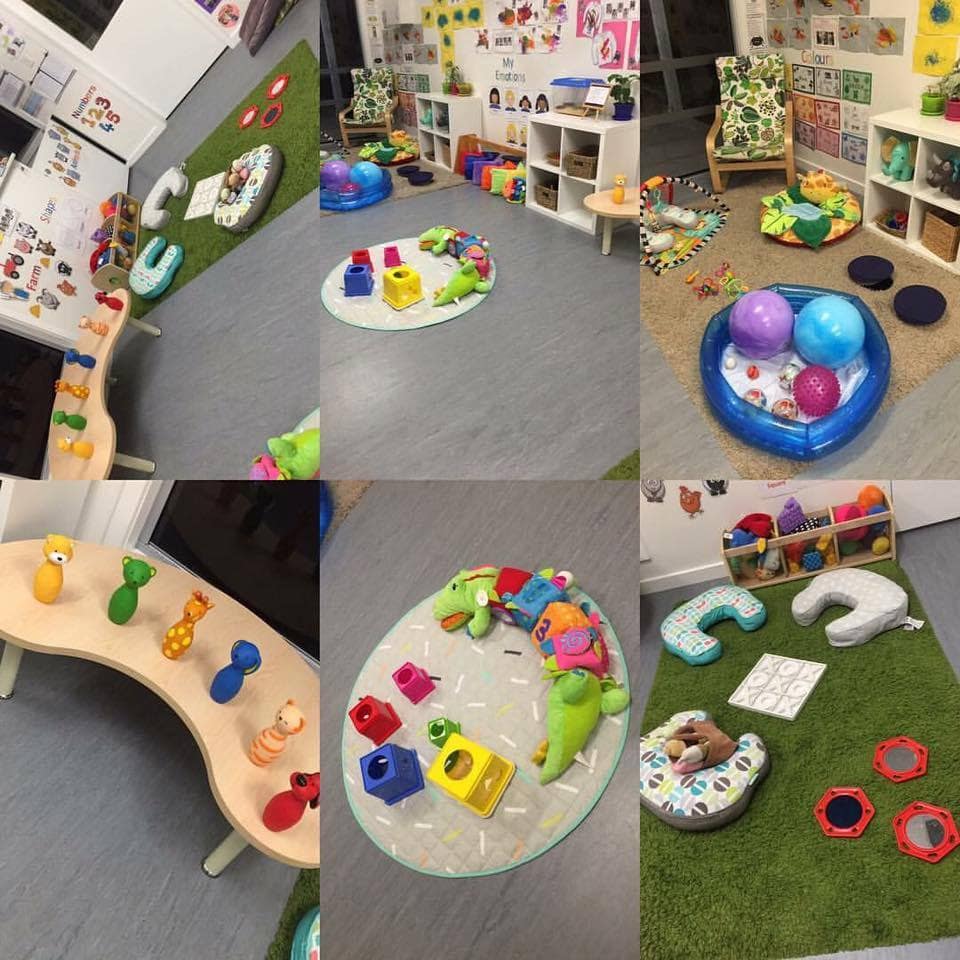
Shared by Clare Louise – The Woodland Child
Clare takes a very natural, fuss free approach and it certainly looks inviting...
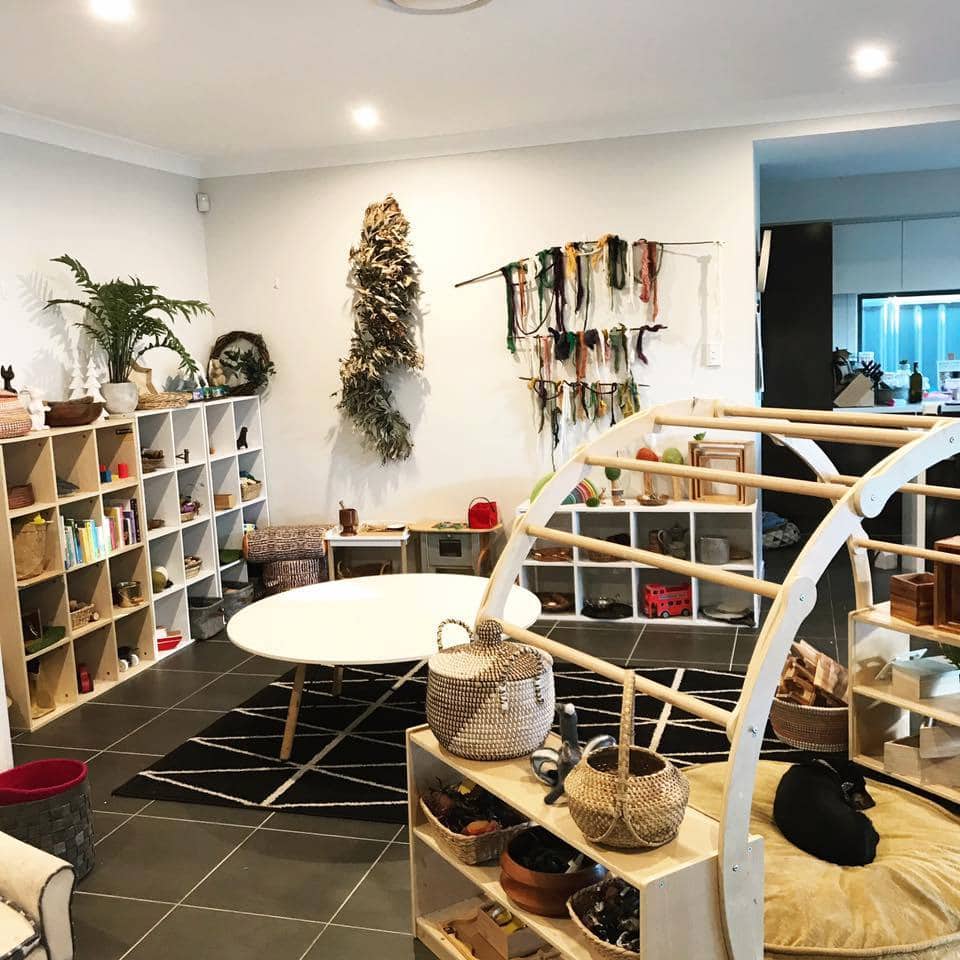
Amy shared with us that she was proud of her room and we don't blame her one bit! Shared by Amy Crombie – Capalaba Kids Early Learning Centre
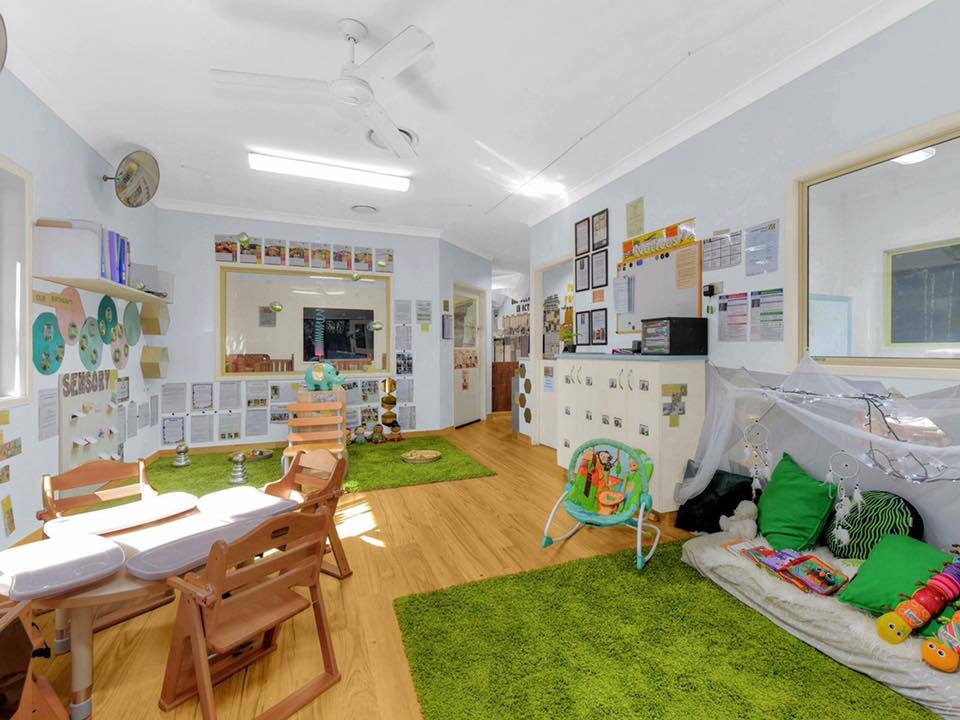
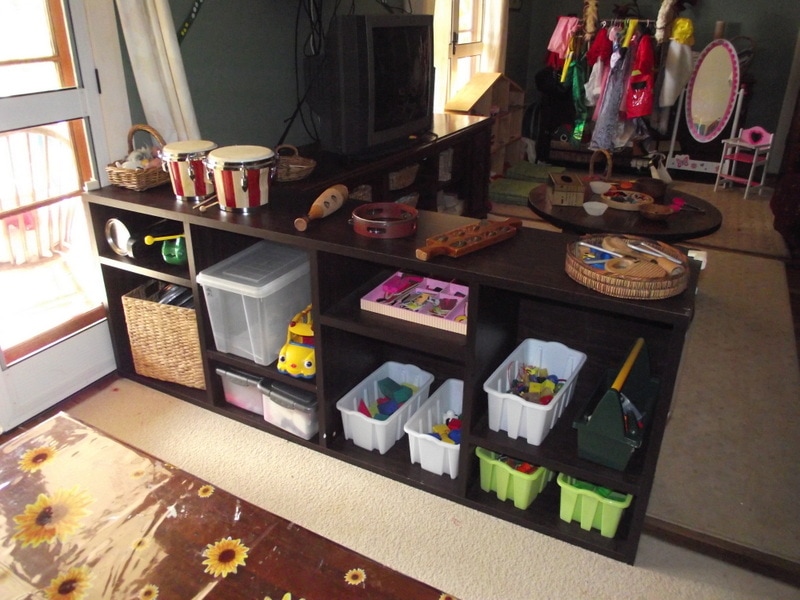
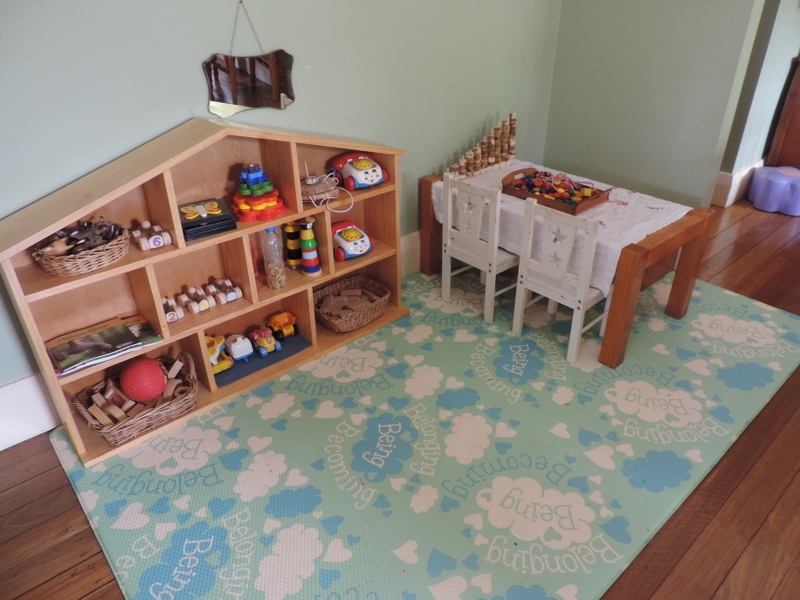
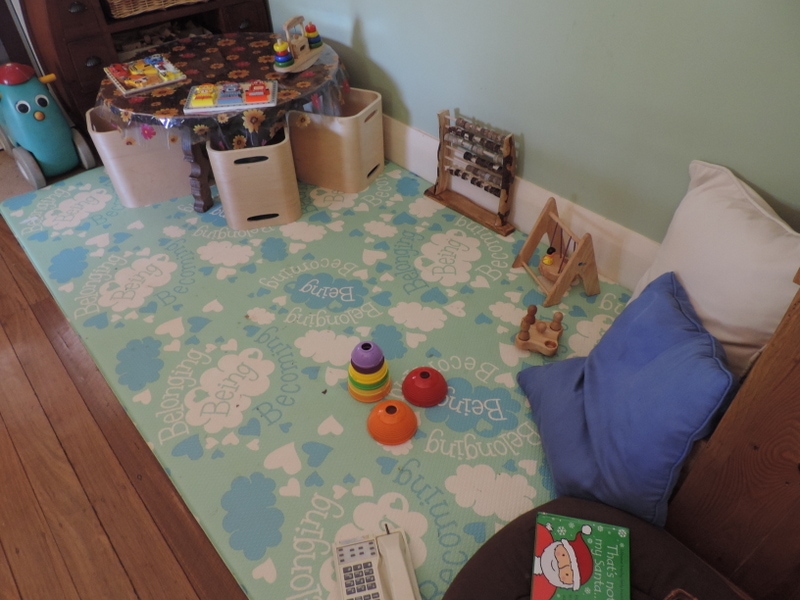
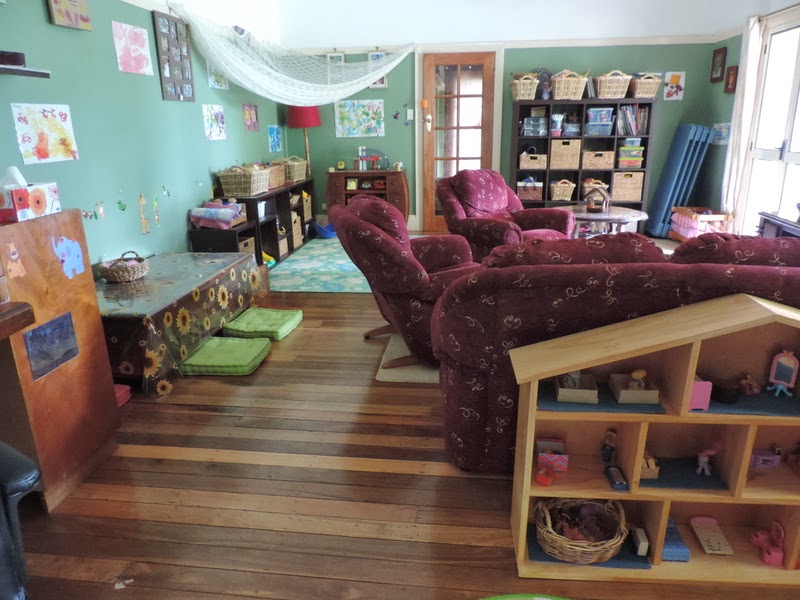
Reggio Inspired Areas
If you like the Reggio approach perhaps you can find some new ideas in these Reggio inspired spaces.
Sarah Hart shared this engaging space set up for a baby and toddler group
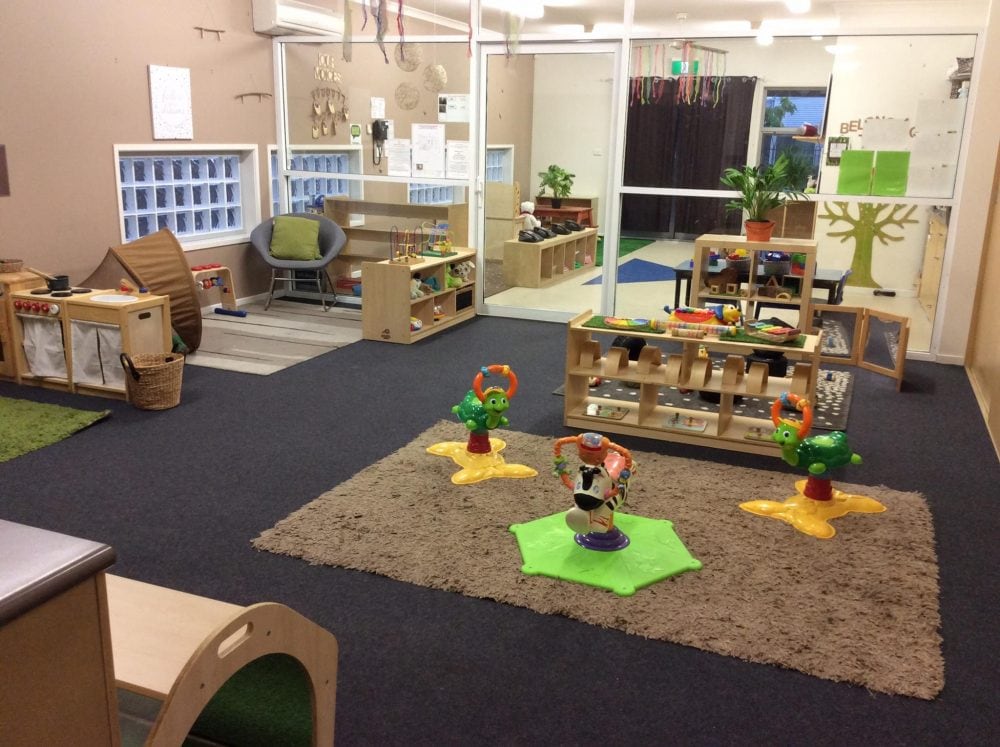
This beautiful space was shared by EverydayinKinder over on Instagram and shows an easily accessible way of encouraging loose parts play.
Lilbellies has a beautiful Reggio inspired nature corner.
Journey into the Enquiry put together this investigation and exploration area using mirrors. What else would you add to this table or perhaps take away?
Dolphinclass on Instagram shared their Reggio inspired area. It looks like a place that invites sense of belonging and calm!
Mrs Myers Kindergarten has a lovely natural Reggio style area too.

Need some ideas to invite open ended play experiences using everyday and upcycled materials? Click below for a FREE Empowered Ed visual action guide...
Montessori Inspired Indoor Spaces
Love the Montessori perspective? Take a look at the inspiration below...
This is a simple Montessori themed play area that was shared on Instagram.
Bruna Masalin shows how you can make a welcoming Montessori area while keeping everything simple.
TransformED shared this Montessori setup idea.
Waldorf Inspired Spaces
This Waldorf inspired Autumn Play corner is an interesting use of a small space. Look at that wooden sewing machine...I want a turn!
A warm and welcoming kitchen play space in the home for children to explore - so many wonderful Waldorf elements incorporated simply here. Click over to Happy Whimsical Hearts to see more photos.
This area is from Natural Beach Living and makes wonderful use of natural light, windows, reflection and colours of nature!
Kelly from happy Whimsical Hearts also takes us on a tour of her daughter's Waldorf Kindergarten and shares some of the reasons why they love it - using her daughter's own words and voice!
You will be able to immediately watch the full webinar recording, download the slides and grab your certificate for professional development hours... along with FULL access to all of the other workshops, training videos, certificates, program plans, activity ideas, templates, e-books and more. We’d love to show you around and you can choose to go month to month or annually AND cancel at anytime!
If you enjoyed this post why not PIN IT to Pinterest to save for later.

A Little About Me
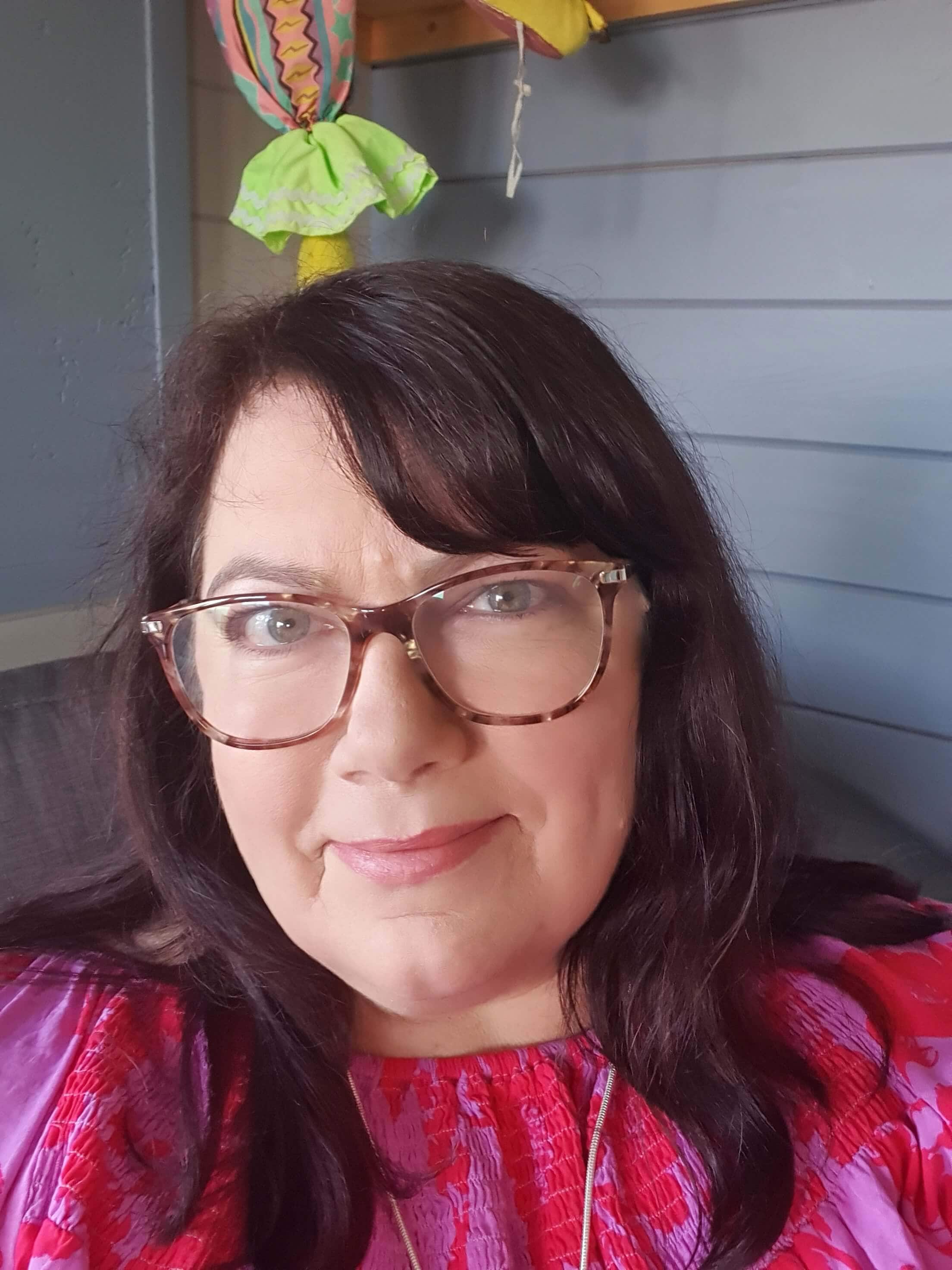
Jodie Clarke is an early childhood professional supporting educators who want and need to stay passionate about the work they do! She has 30 years hands-on experience in the early childhood and human services sectors across many different roles.
Jodie is mum to 3 in Australia and has already helped thousands of educators with their work through her popular blog posts, activity ideas, online training and e-books.
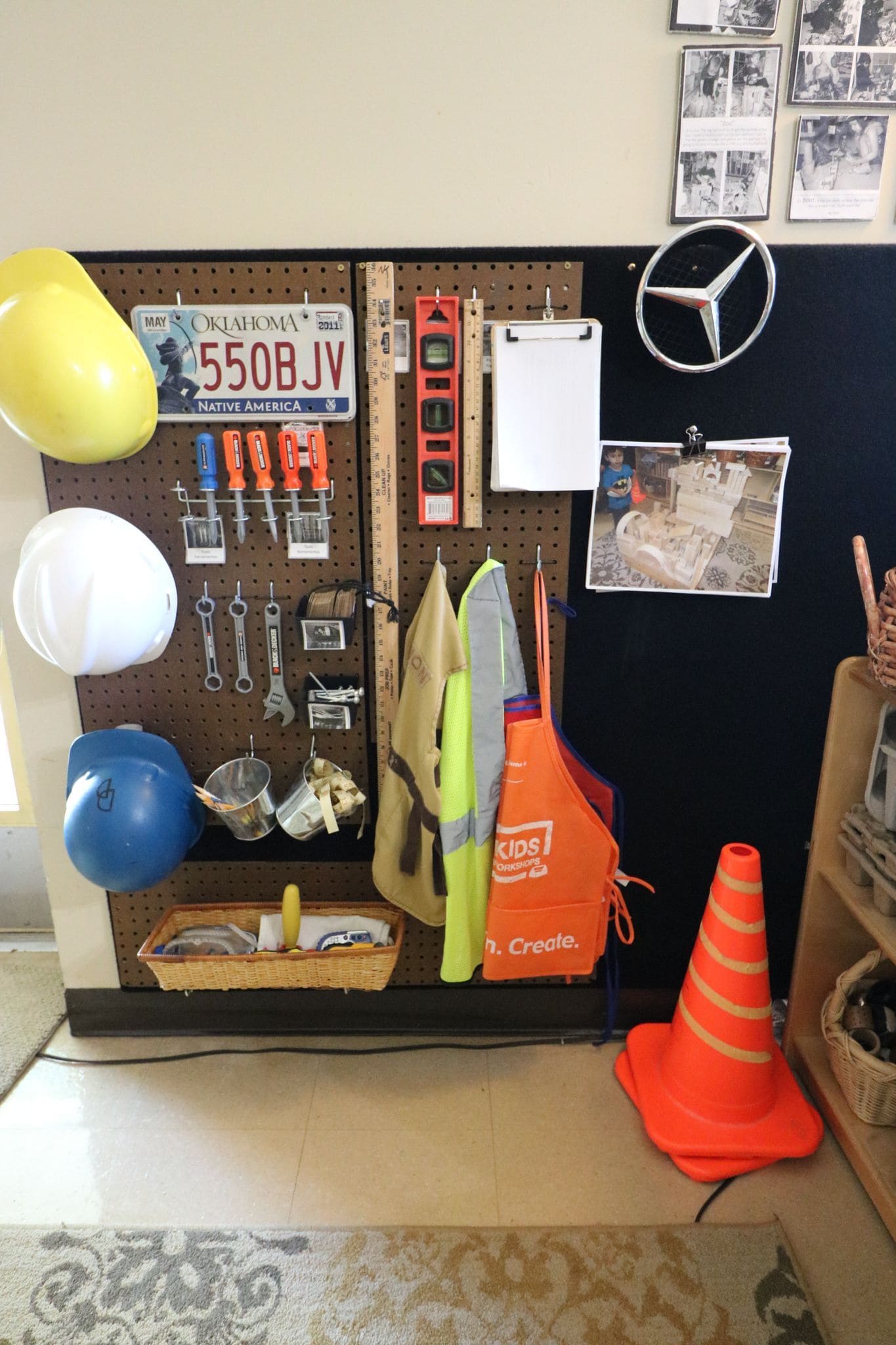
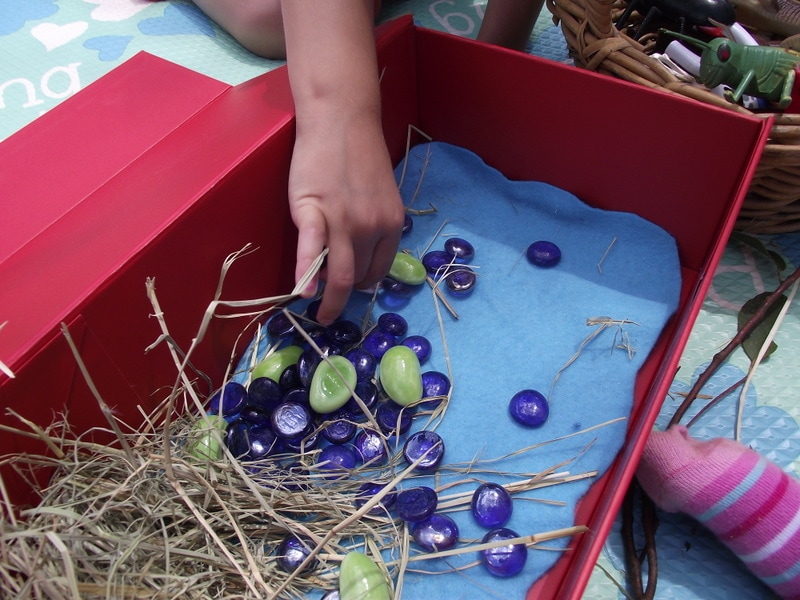
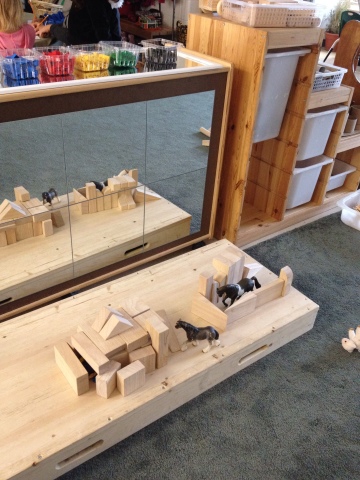
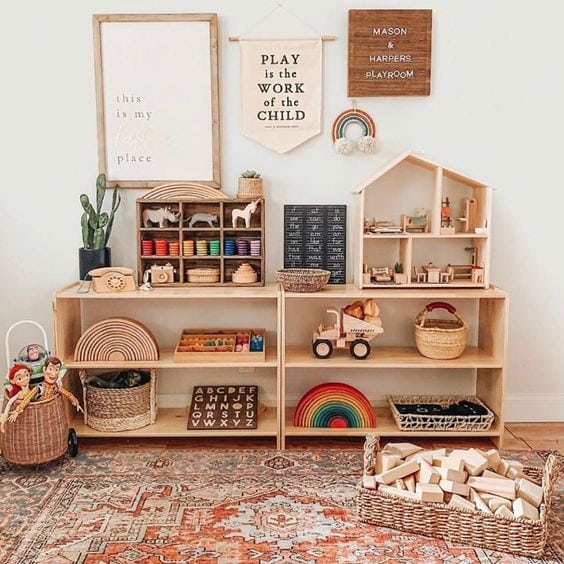
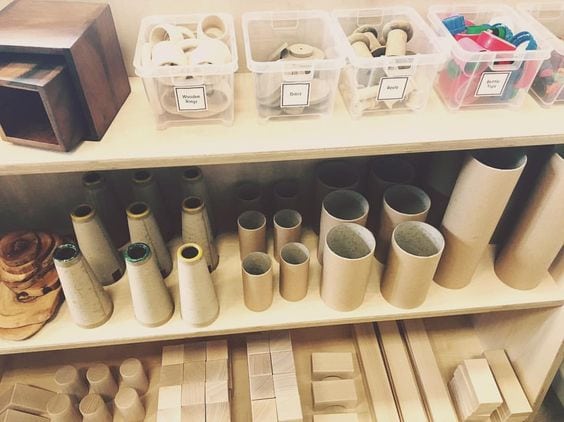
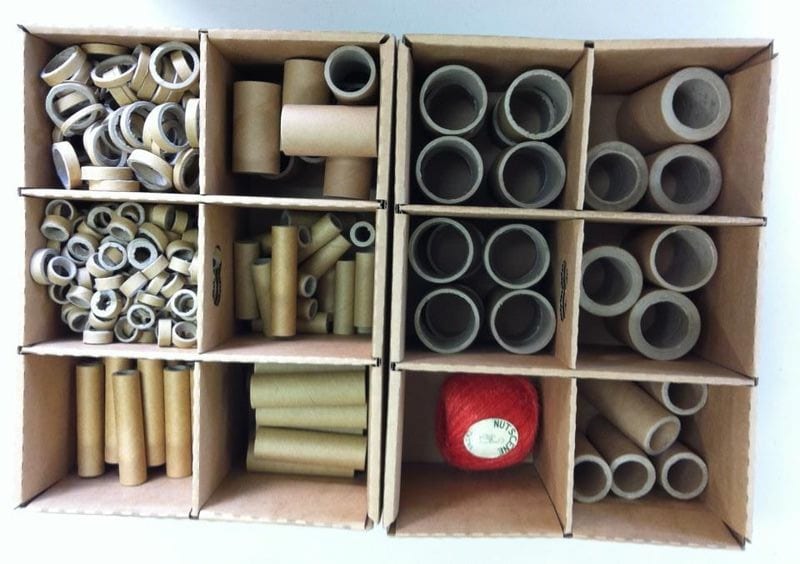
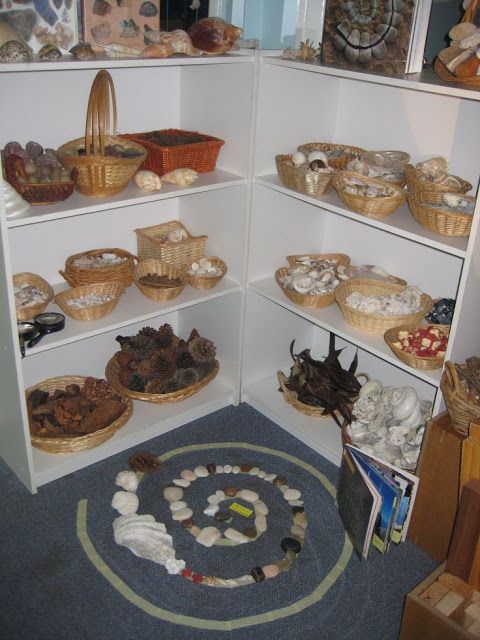
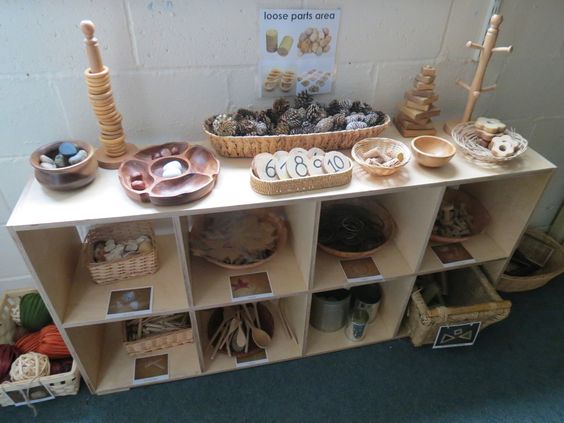
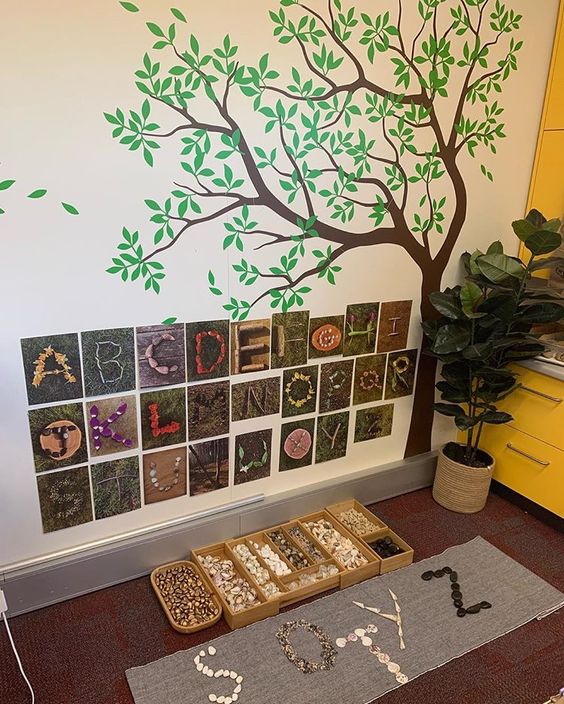
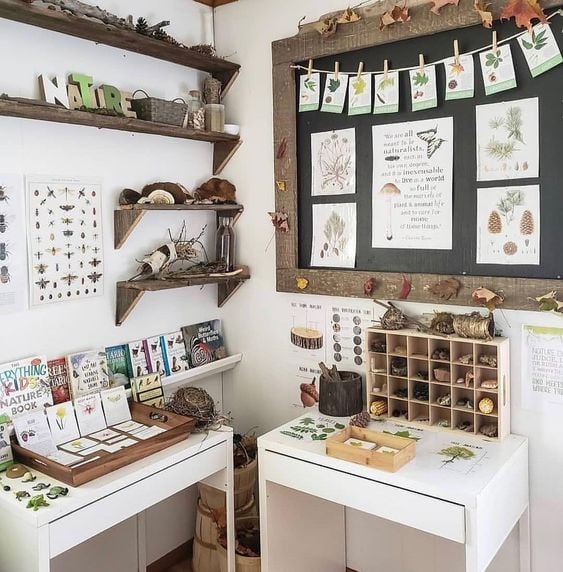
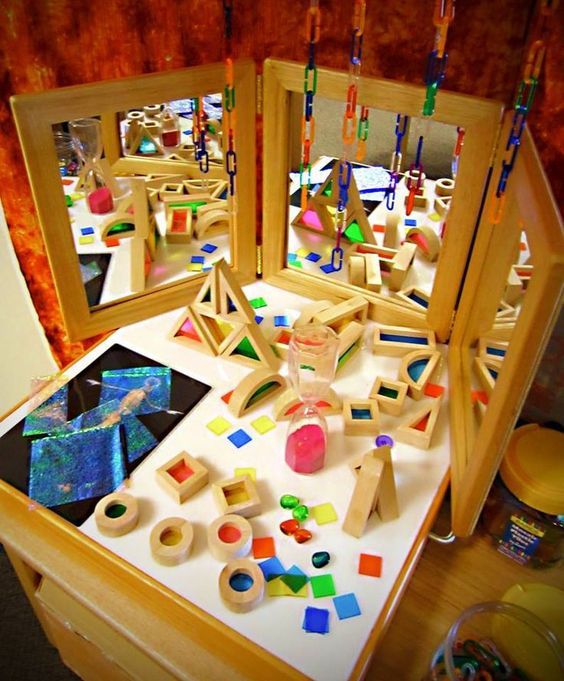
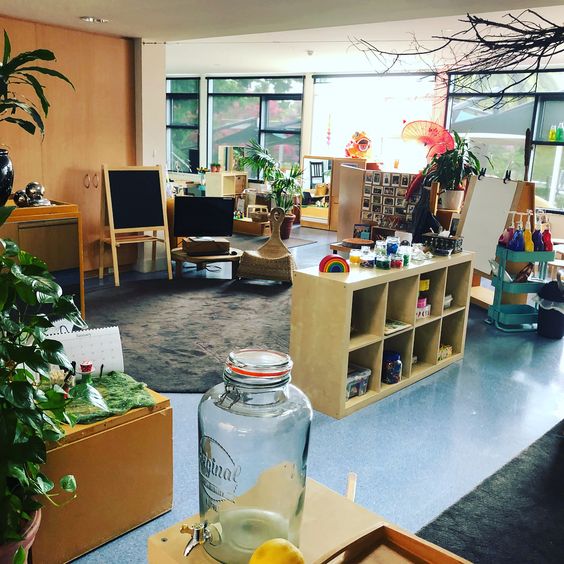
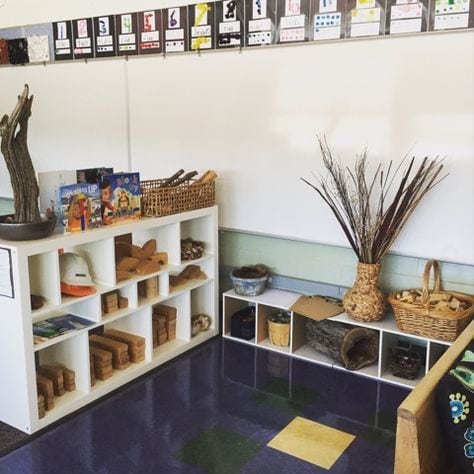
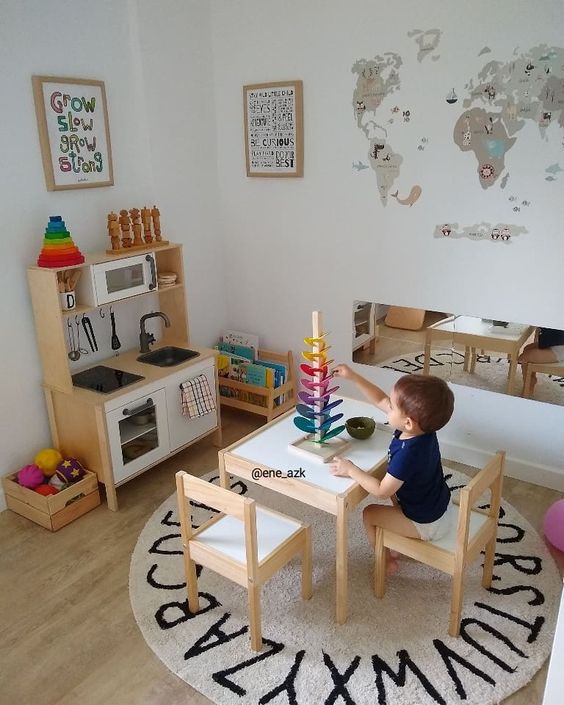
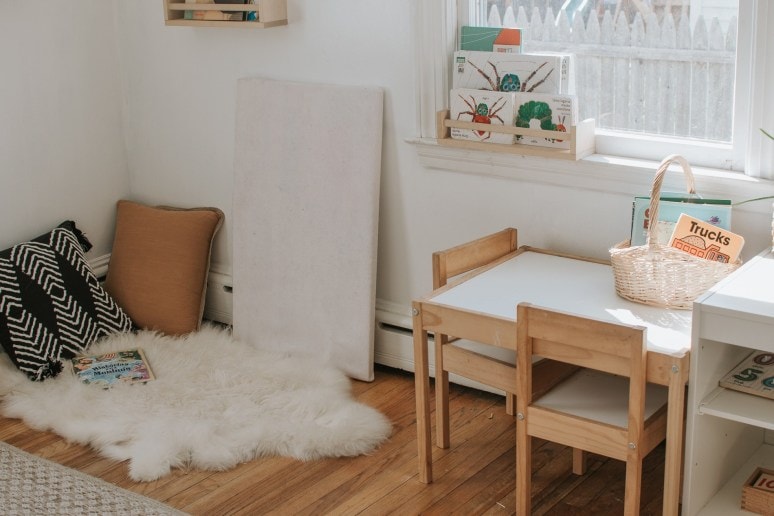
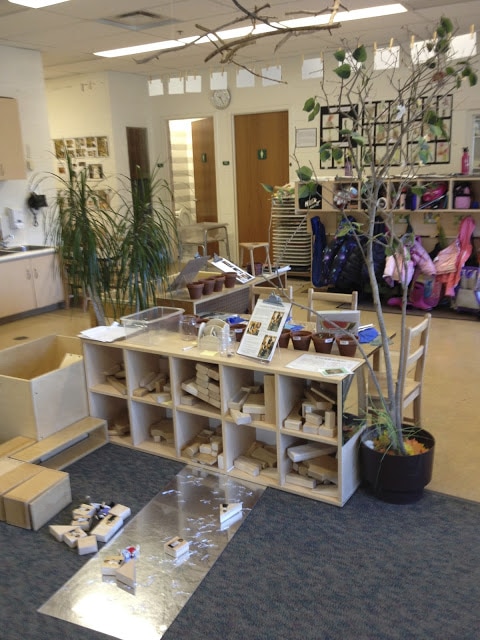
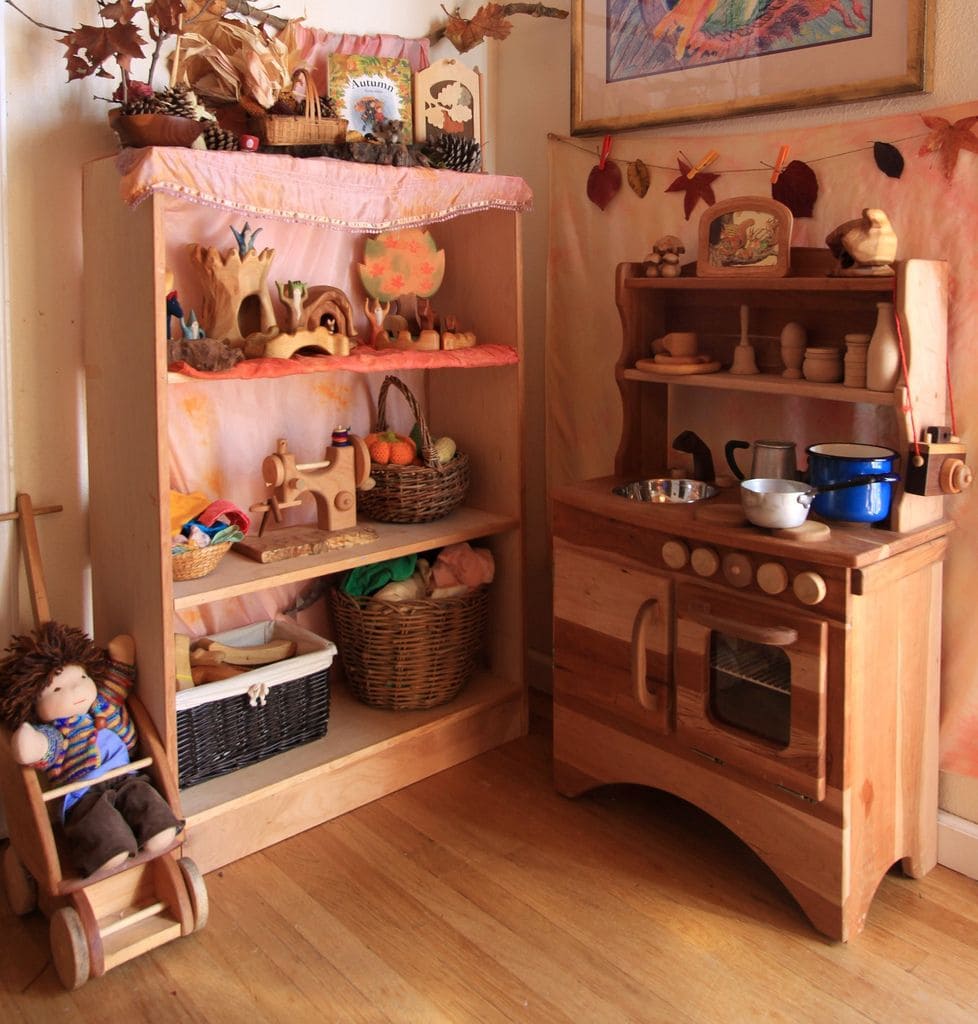
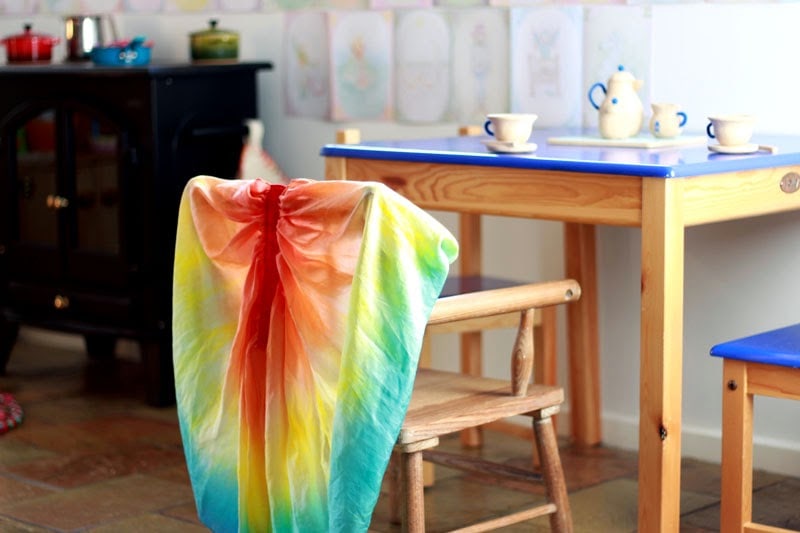
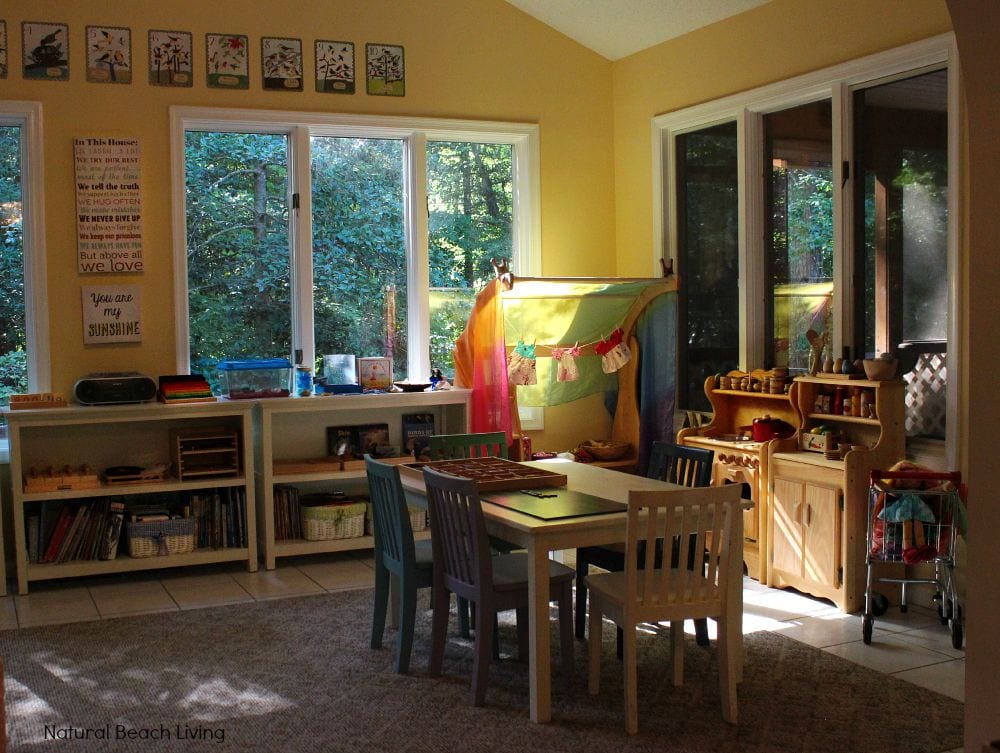
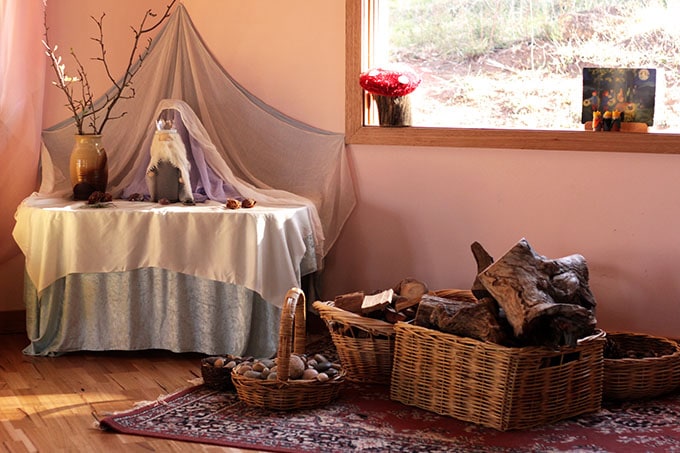
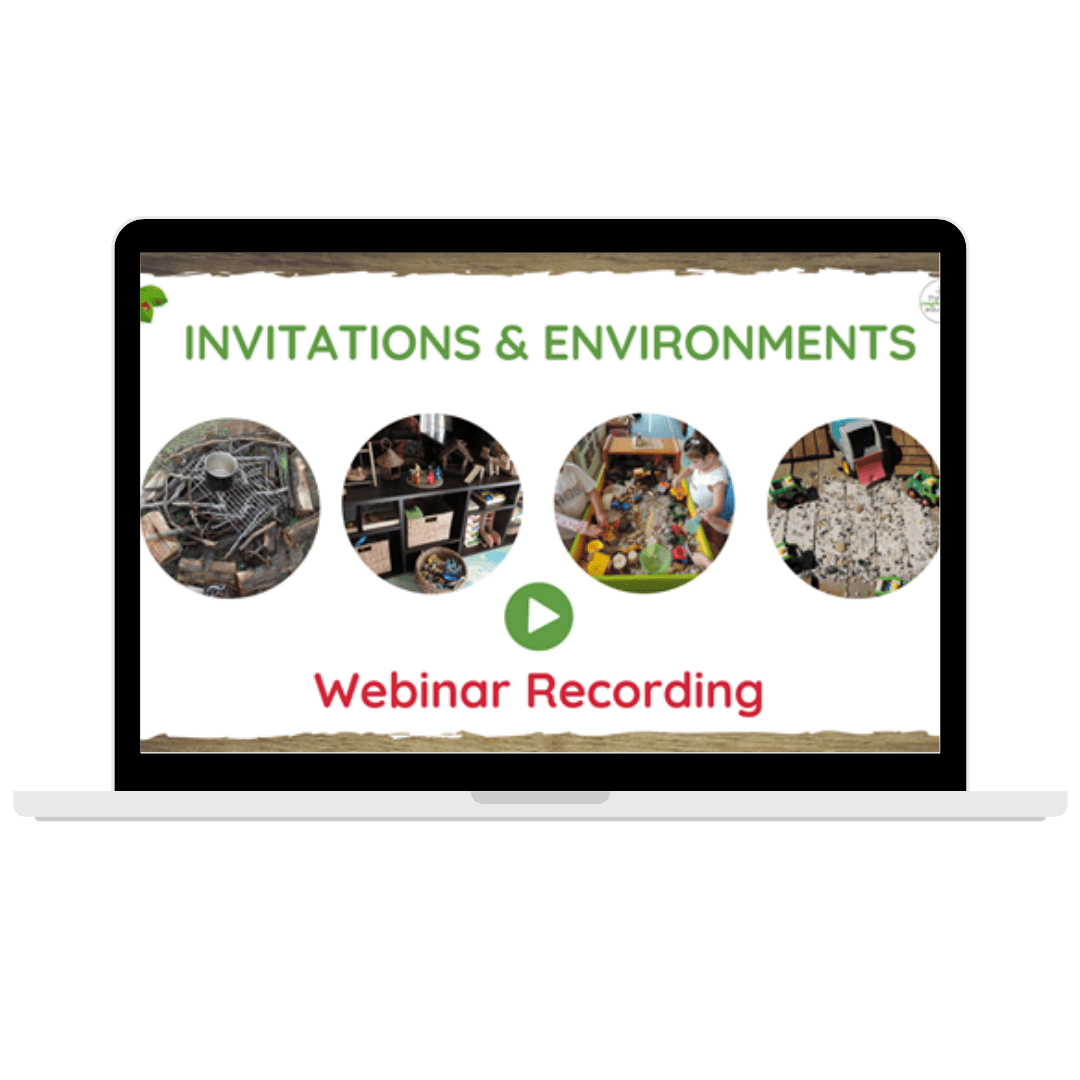

Thanks for sharing.
Thanks for sharing.
It’s a very great material for the ECD centers
THANKS you for all these beautiful share and advices that you give us. I really appreciated your way of working!